NEIGHBORHOOD WILDFLOWERS
4/20/20
With spending more of my walking time in the neighborhood, I’ve noticed how many spring wildflowers we have nearby.
Tulip tree (Liriodendron tulipifera)
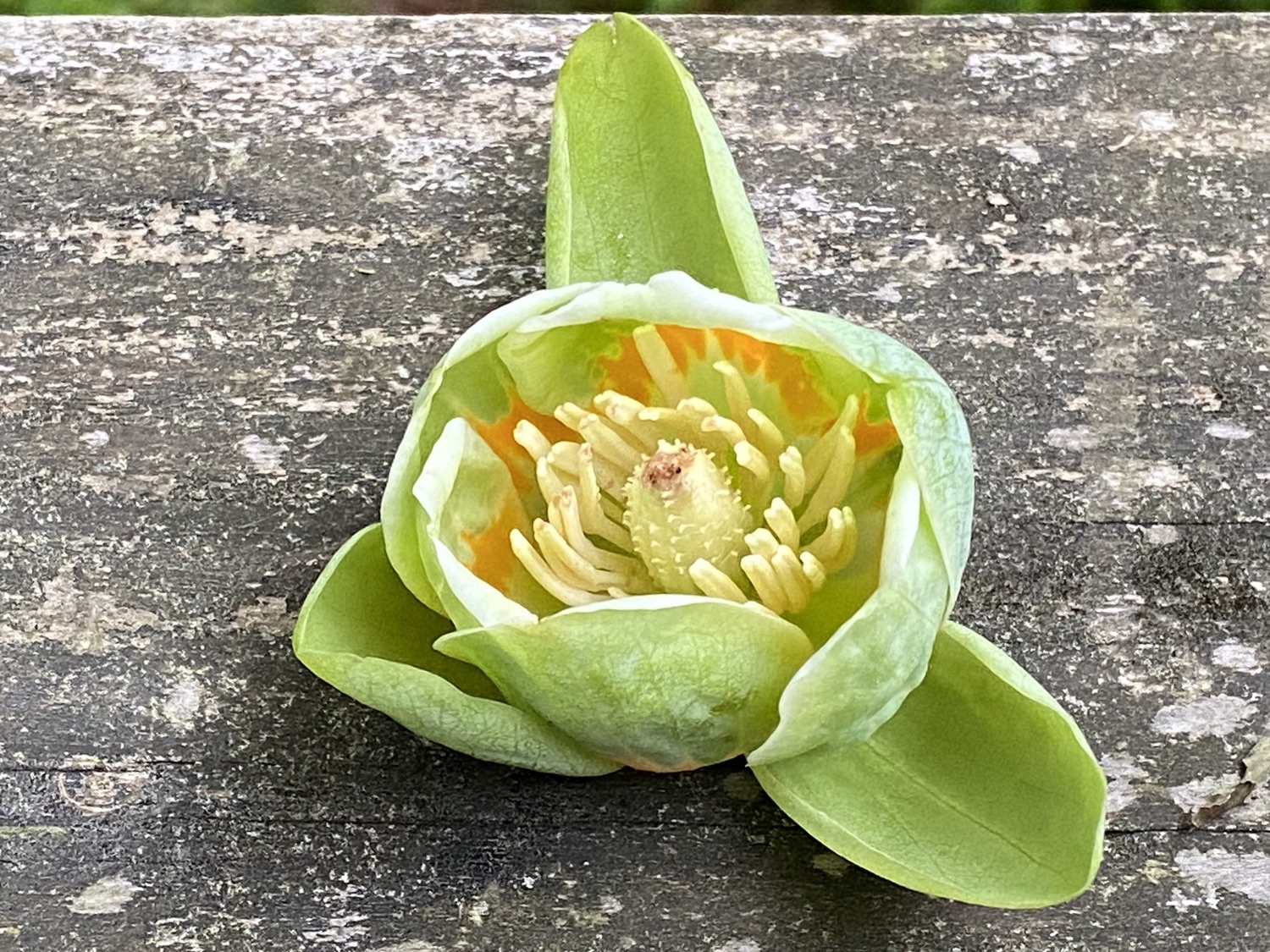
Mock Strawberry (Potentilla indica, also called Duchesnea indica). Note the leaflets of three. The fruit is tempting but tasteless.
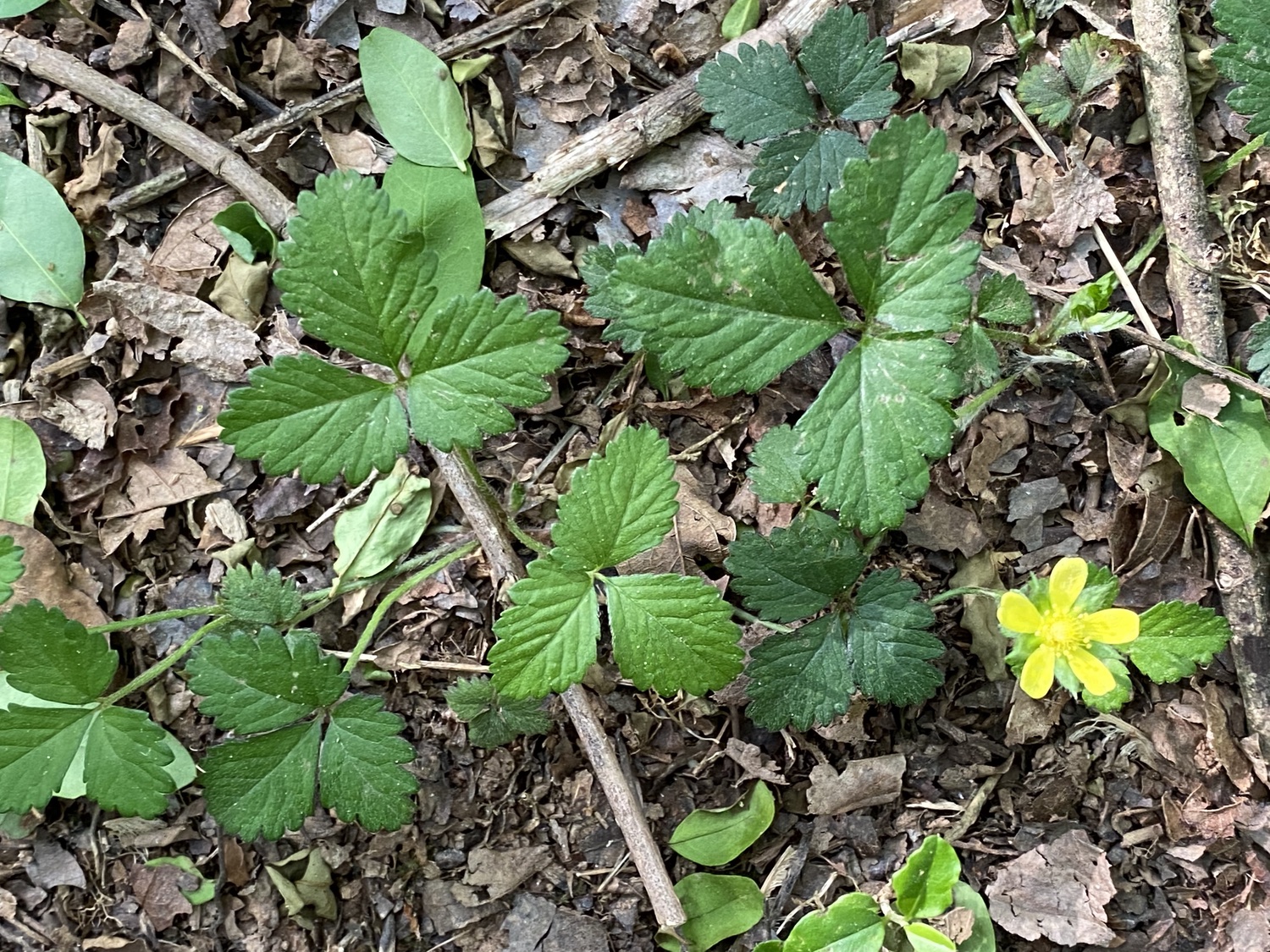
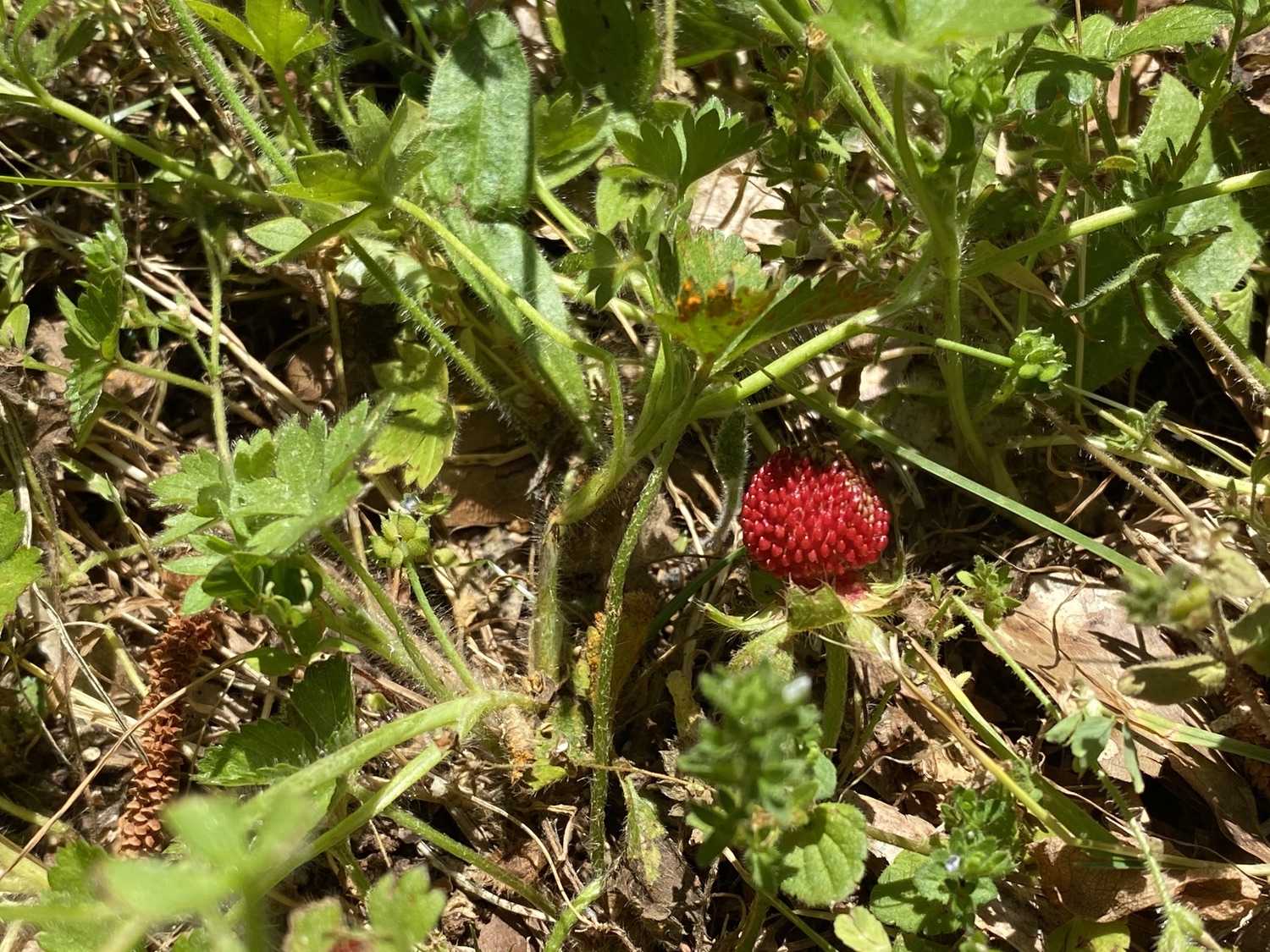
Wild Strawberry (Fragaria virginica). I’ve not tasted its fruit.
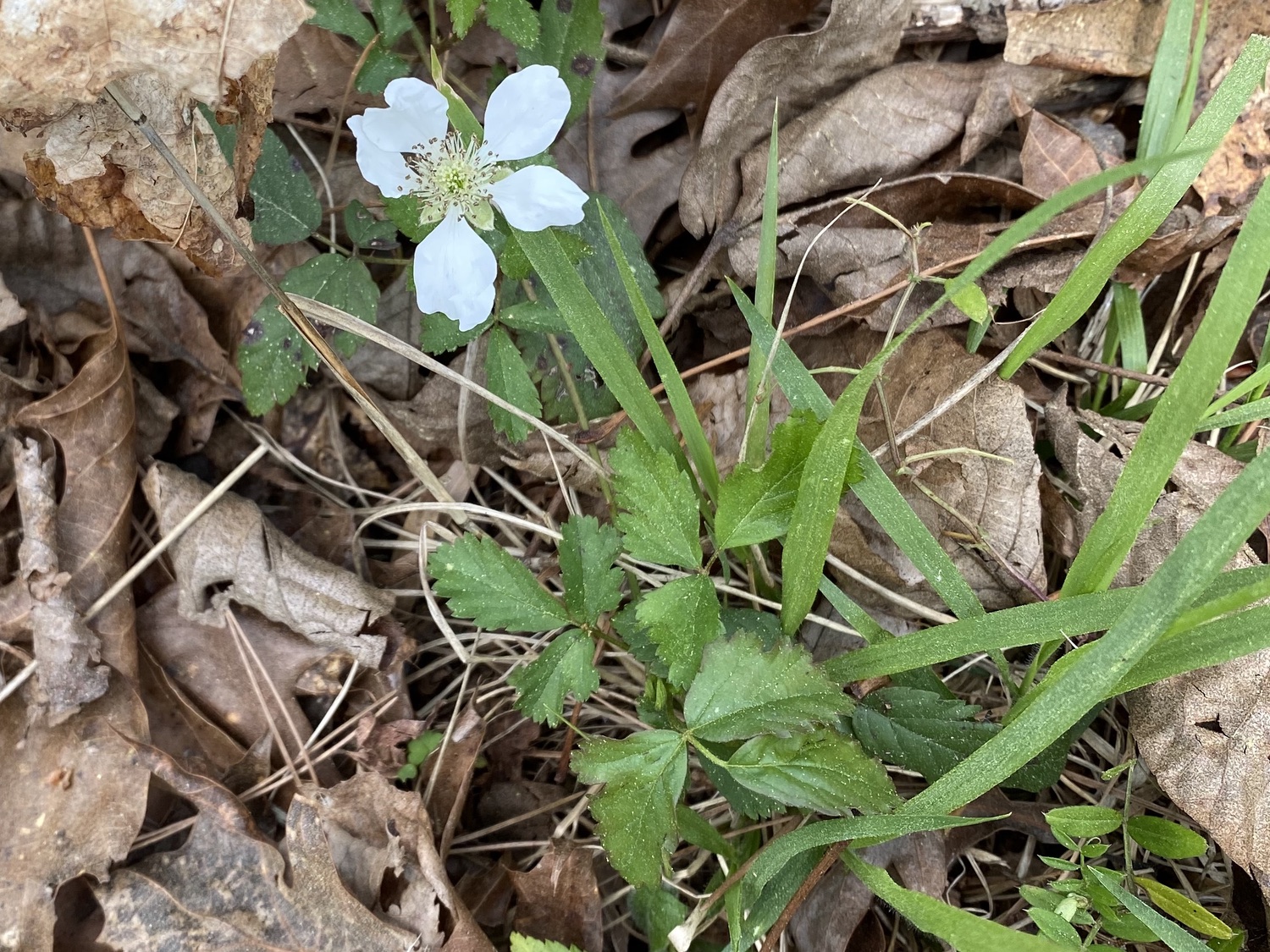
Highbush Blackberry (Rubus argutus; also called Sawtooth Blackberry, Rubus pensilvanicus). The flowers of these are startlingly similar to the Wild Strawberry, although the leaves and growth habit of the two are completely different. Their berries are tasteless.
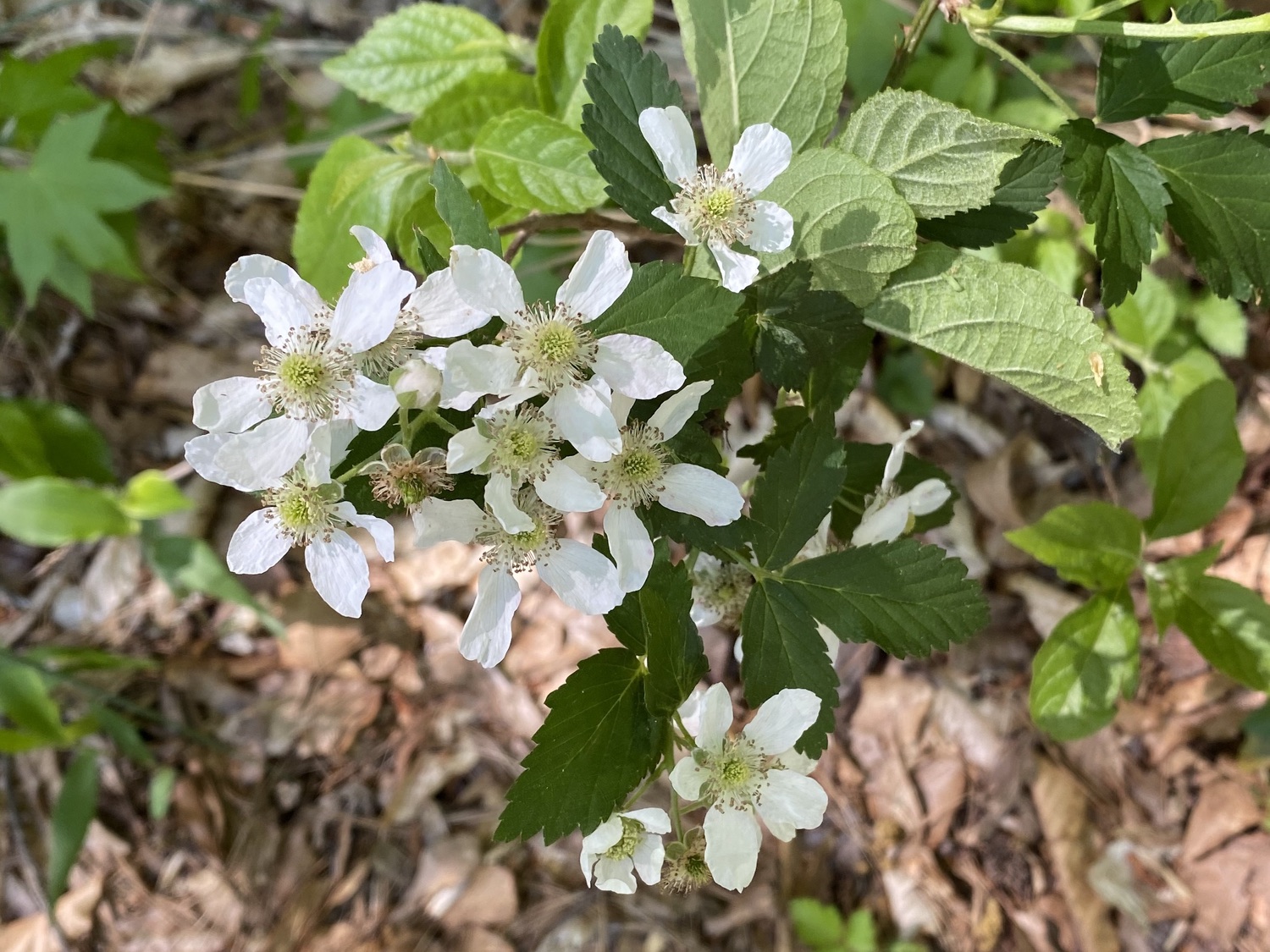
White Clover (Trifolium repens)
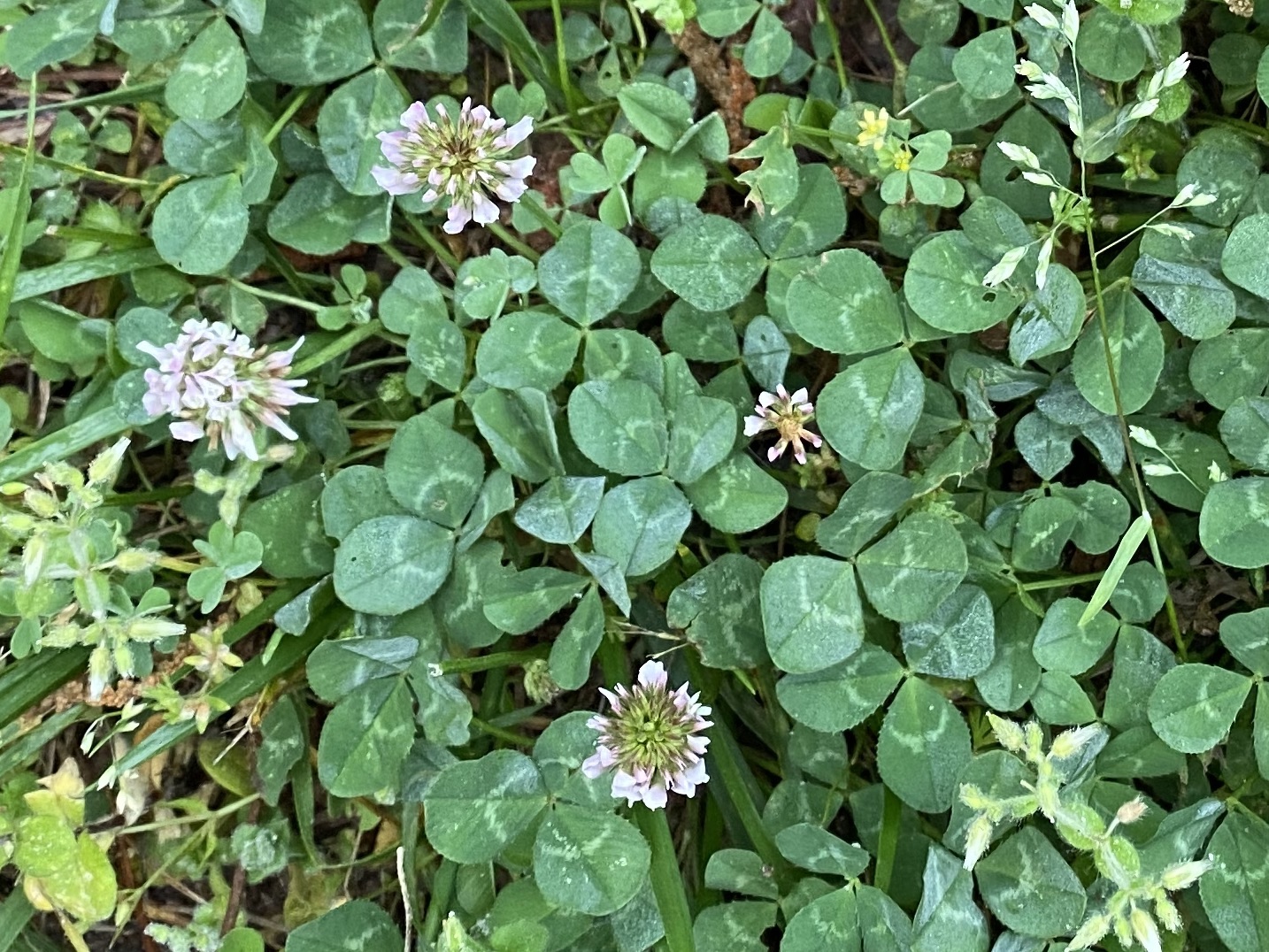
Common Blue Violet (Viola sororia). We may have more species than this in our neighborhood that I’ve not been able to distinguish.
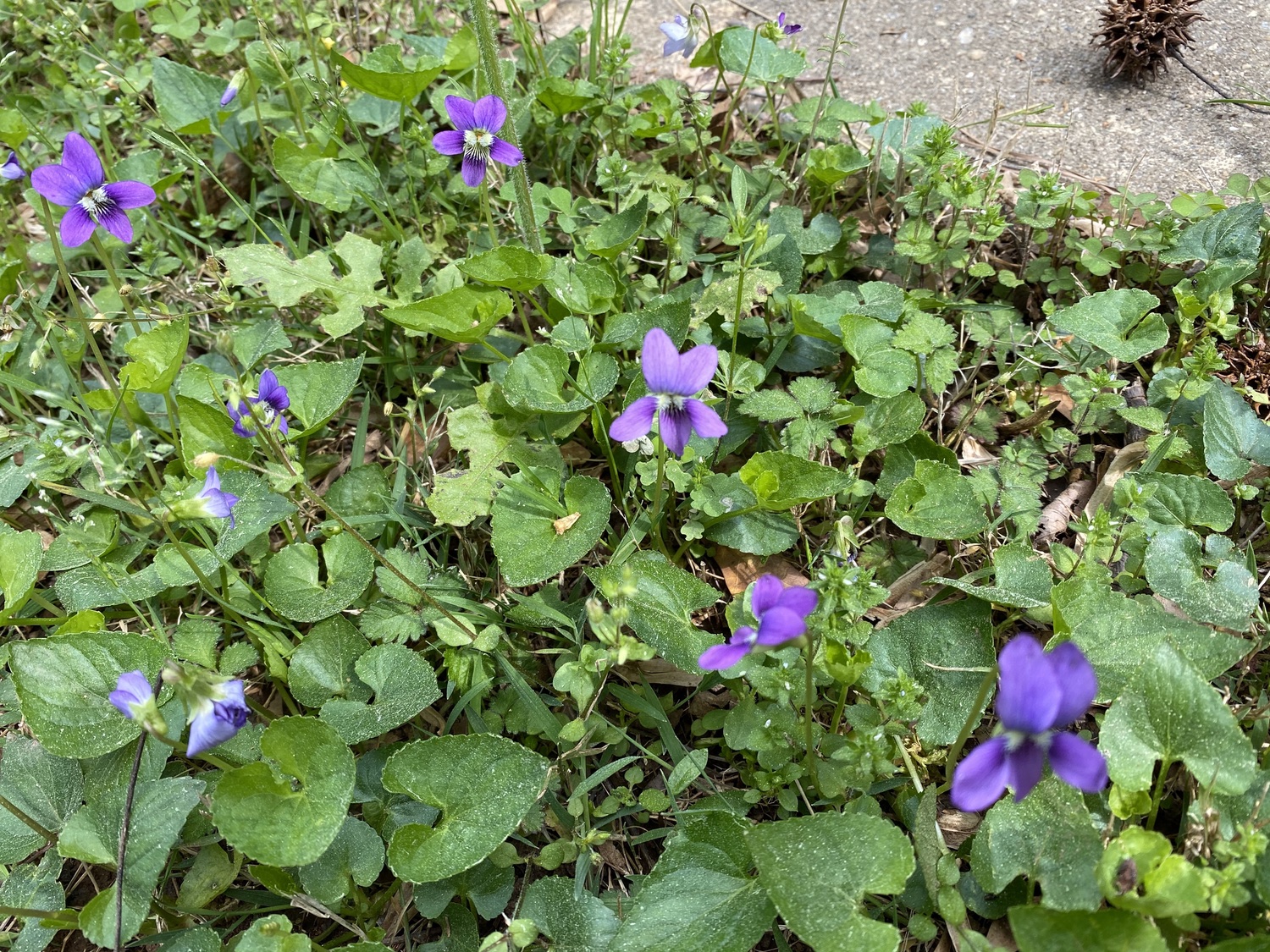
Field Madder (Galium sherardia). The flowers on this are tiny (¼" at most), and it forms a ground cover.
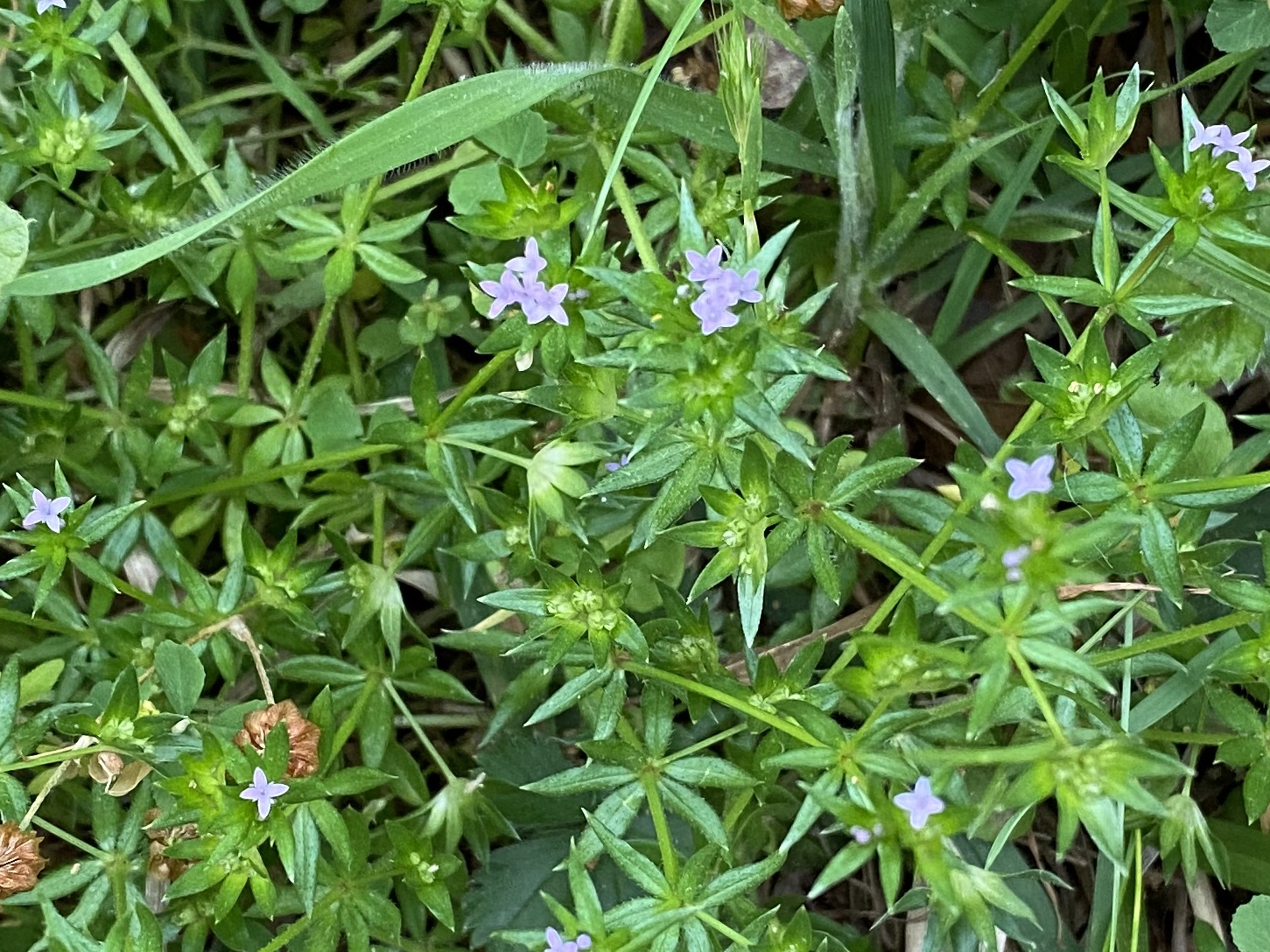
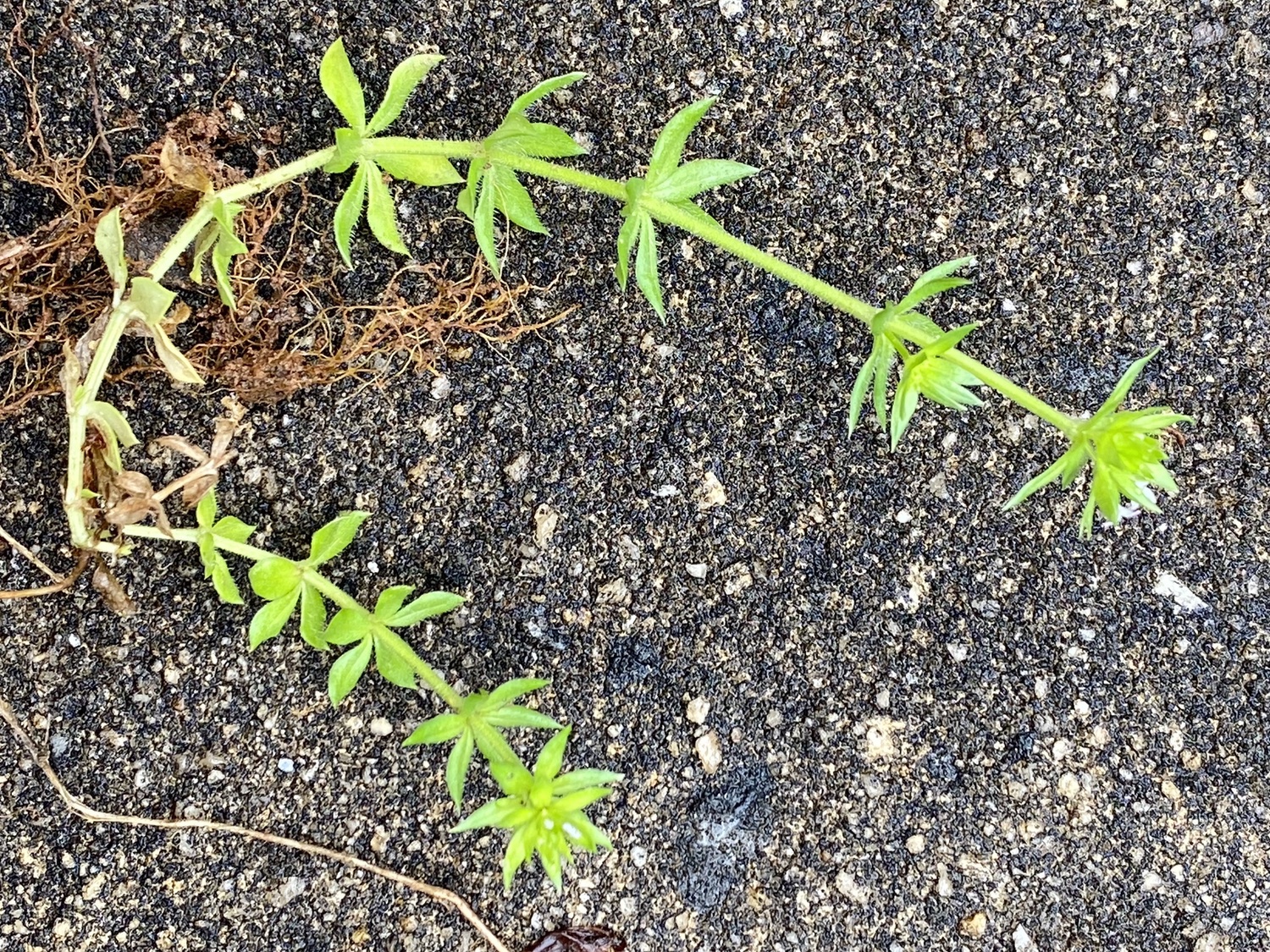
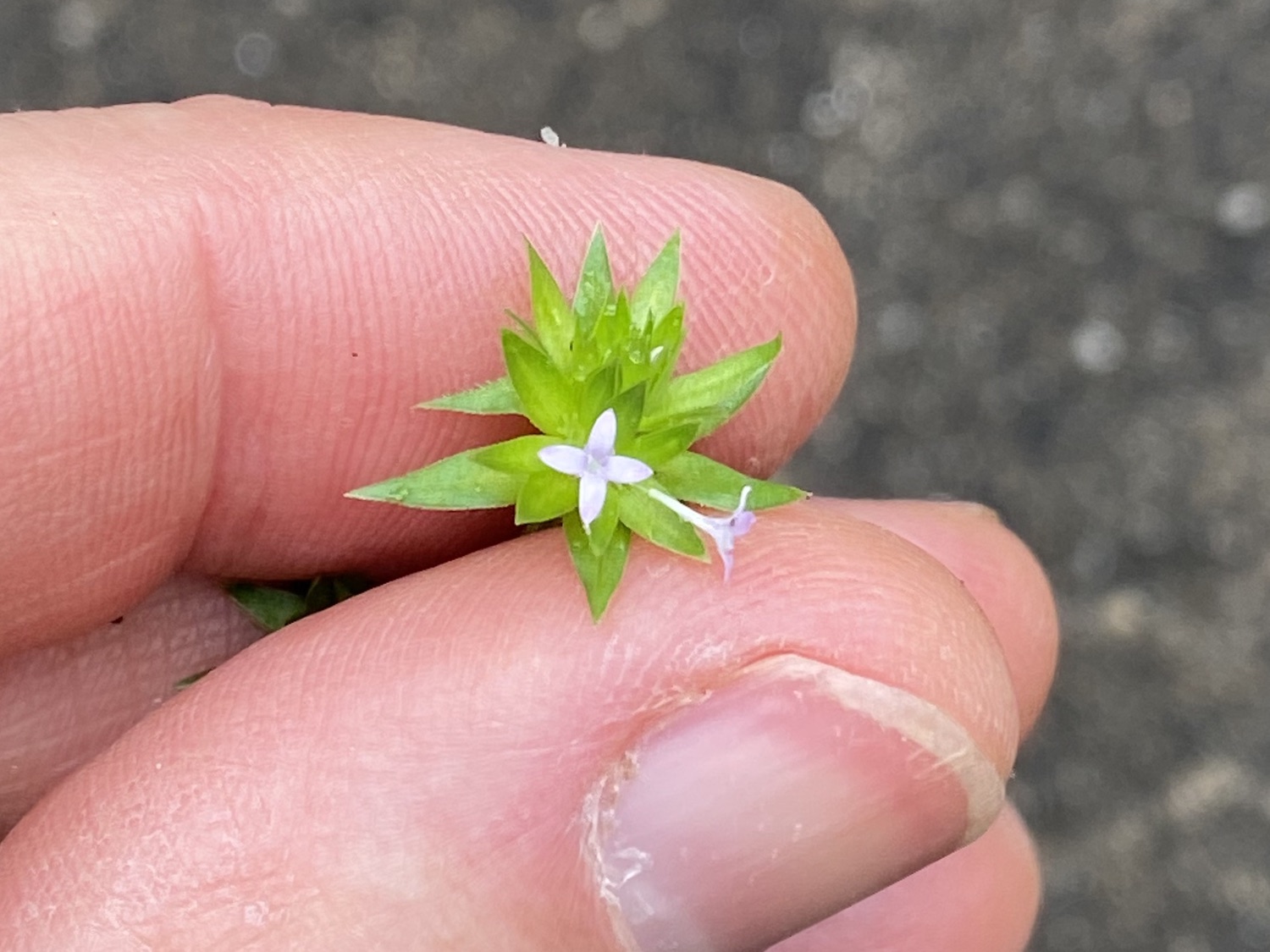
Five Fingers (Potentilla canadensis, also called Dwarf Cinquefoil). The Mock Strawberry is also a Potentilla, and the easiest way to tell them apart is the number of leaflets: 3 for the Mock Strawberry and 5 for Five Fingers.
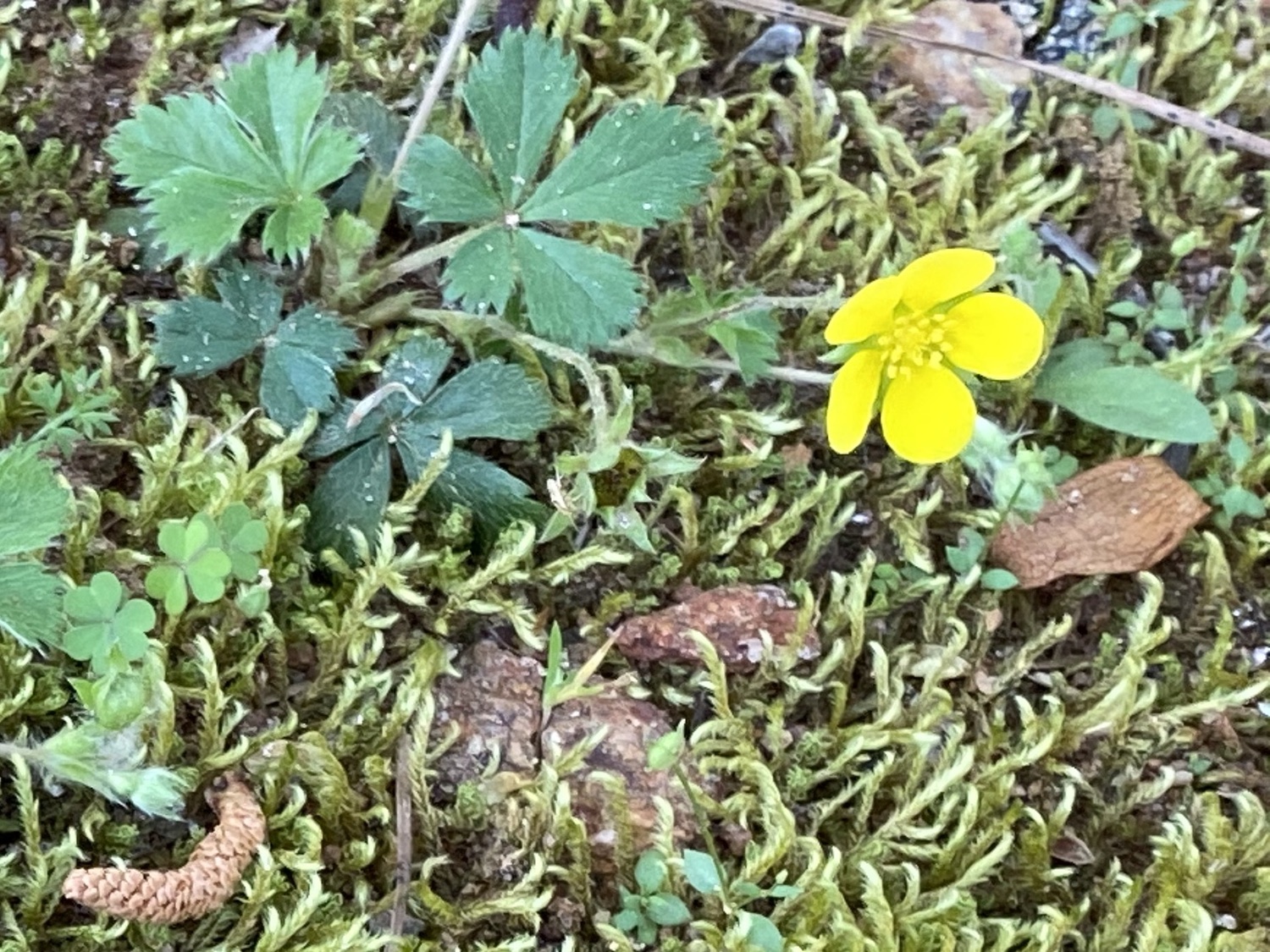
Green-and-Gold (Chrysogonum repens). Note that the edges of the leaf continue down along the stem.
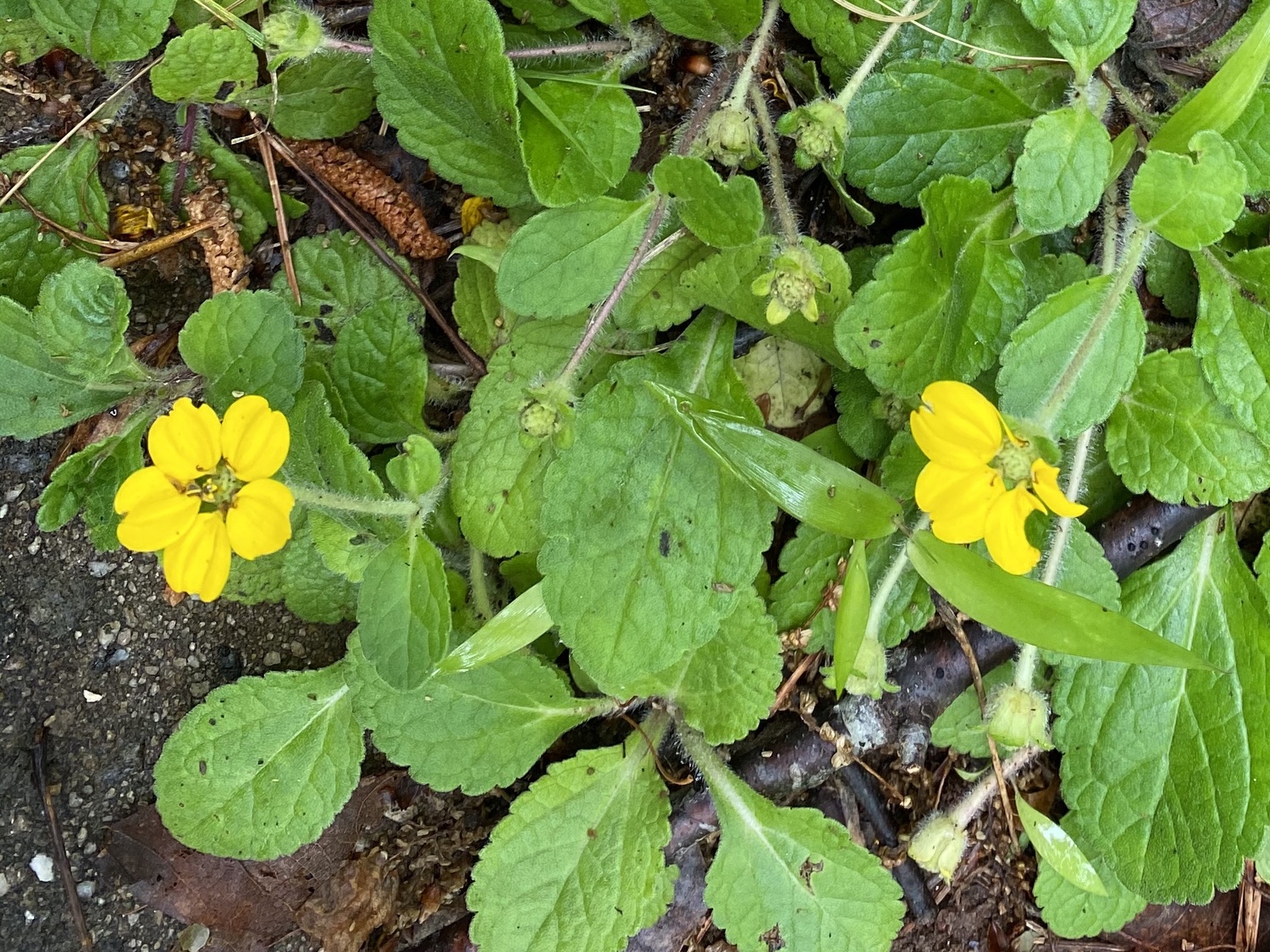
Common Dandelion (Taraxicum officinale)
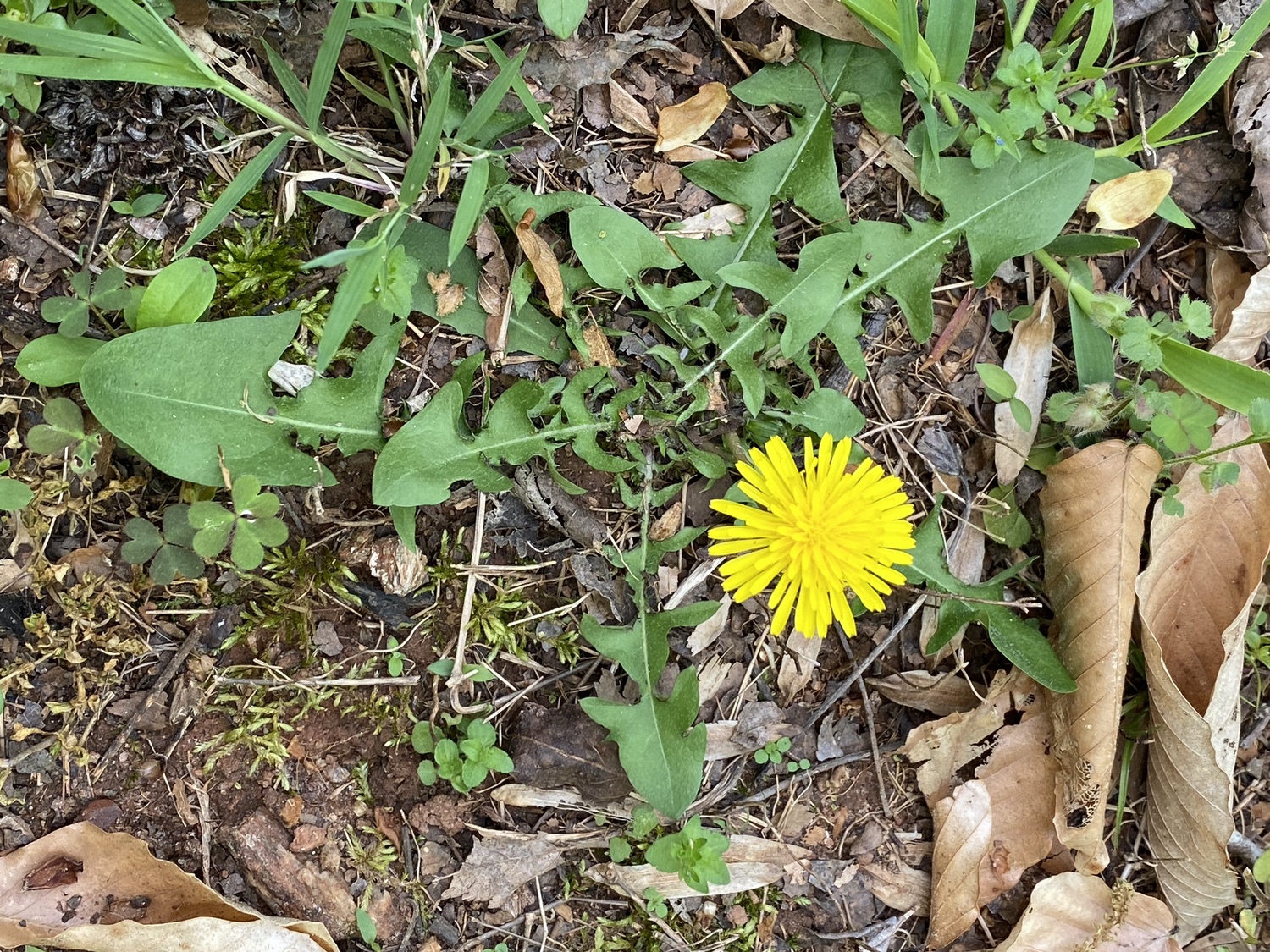
Oriental False Hawksbeard (Youngia japonica). Note the much smaller flower than the Common Dandelion and the lobate rather than toothed leaves.
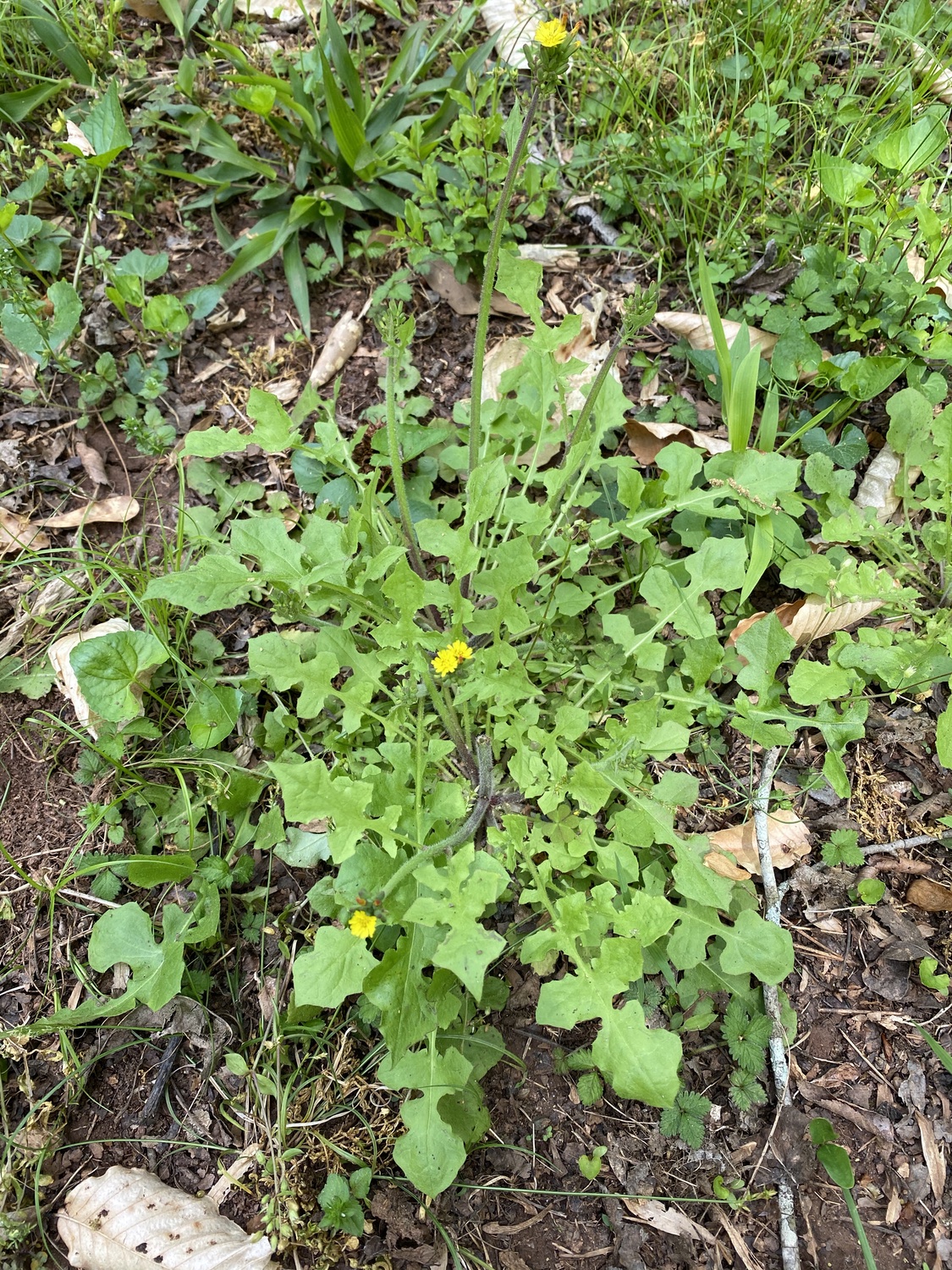
Star-of-Bethlehem (Ornithogalum umbellatum). I’ve seen only one of these and it was growing among Ground Ivy.
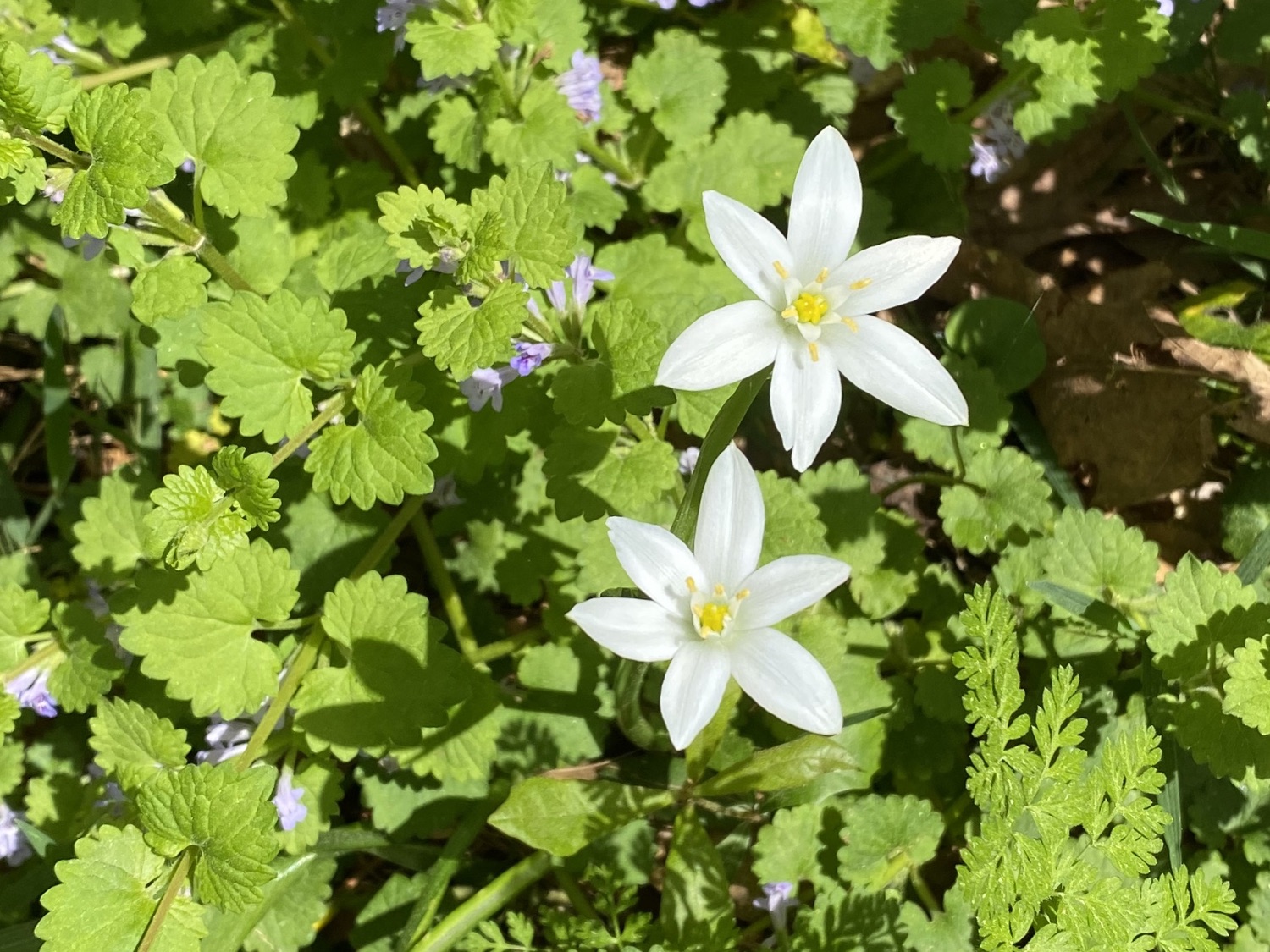
Coral Honeysuckle (Lonicera sempervirens). Although the invasive Japanese Honeysuckle (Lonicera japonica) is from Asia, the Coral Honeysuckle is a native vine. This one is growing on the fence to the golf course, just a few houses down the street from us.
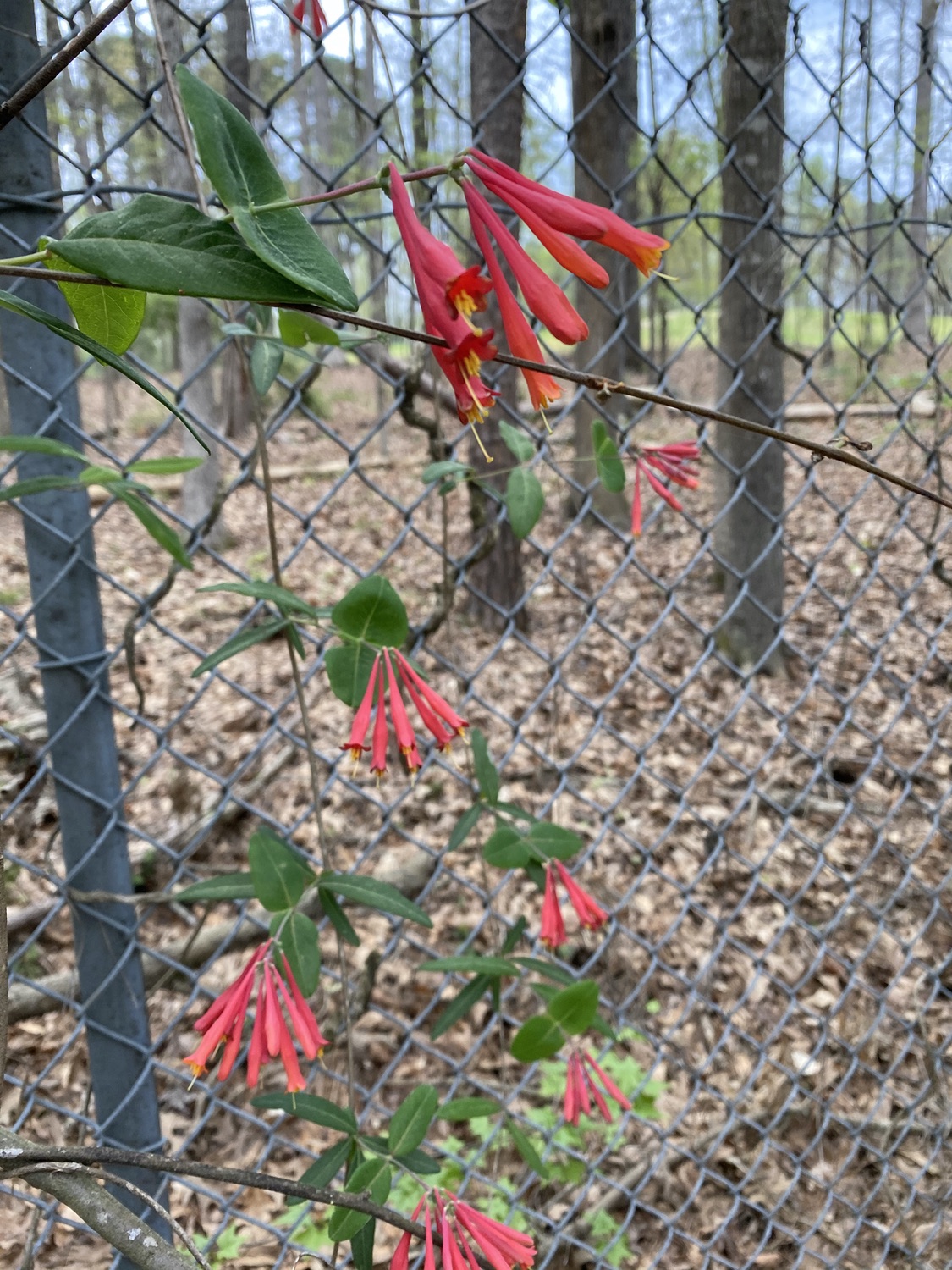
Wild Onion (Allium canadense var. mobilense, also called Wild Garlic and Meadow Garlic). It took me a long time to identify these, until I dug one up and noticed the ever-growing oniony smell. For a long time, I flirted with Star of Bethlehem and other Ornithogalum species, but none quite fit. This flower grows right outside our bedroom window. For much of the later part of the winter, it makes clumps of what looks like beautiful green grass). In spring, it becomes a sea of dainty white flowers.
The hairy leaves emerge near the base, and they are narrow and grass-like, up to 24" long with a central groove and parallel veins. The hairs are sparse on both the upper and lower surfaces, but dense near the edges of the leaves. The root ends in a small (0.5"), roughly spherical, white bulb that smells a bit like an onion. From where they originate from the leaves, the smooth round green stems are 15" long and end in a cluster of 13–15 white flowers. The plant I dug up had three leaves and two flower stems, but I haven’t checked to see if this is typical. The flowers are about ½" across, with six pinkish-white semi-translucent tepals (I do not see separate petals and sepals), each with a pale pink central vein. Each tepal is oval and pointed. There are six stamens, consisting of yellow anthers, and a white triangular filament that tapers towards the anther. There is a prominent green ovary at the center of the flower, 2–3 mm in diameter. Because I have not seen bulblets in the flower cluster, I placed these in var. mobilense, rather than var. canadense.

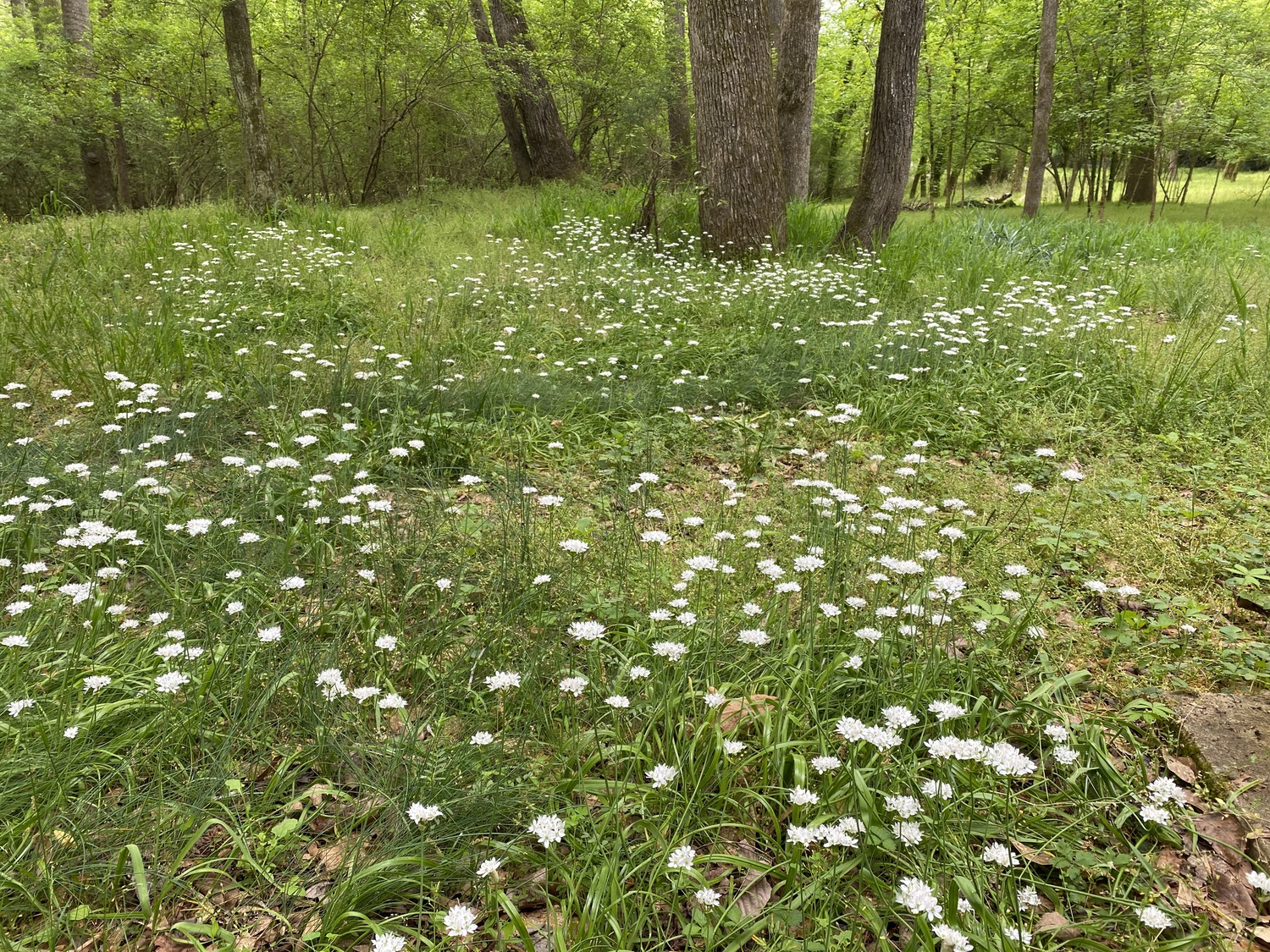
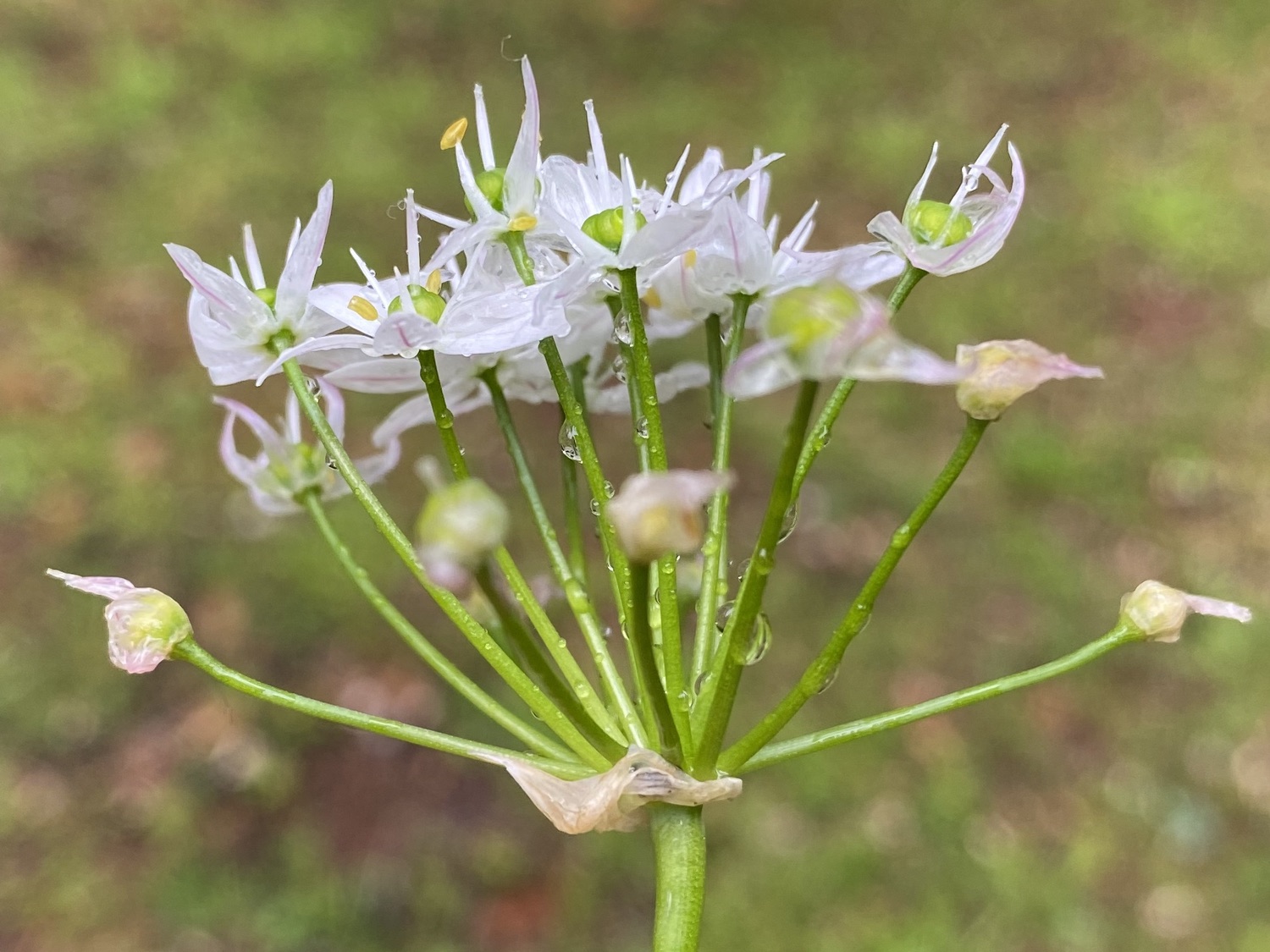
Philadelphia Fleabane (Erigeron philadelphicus)
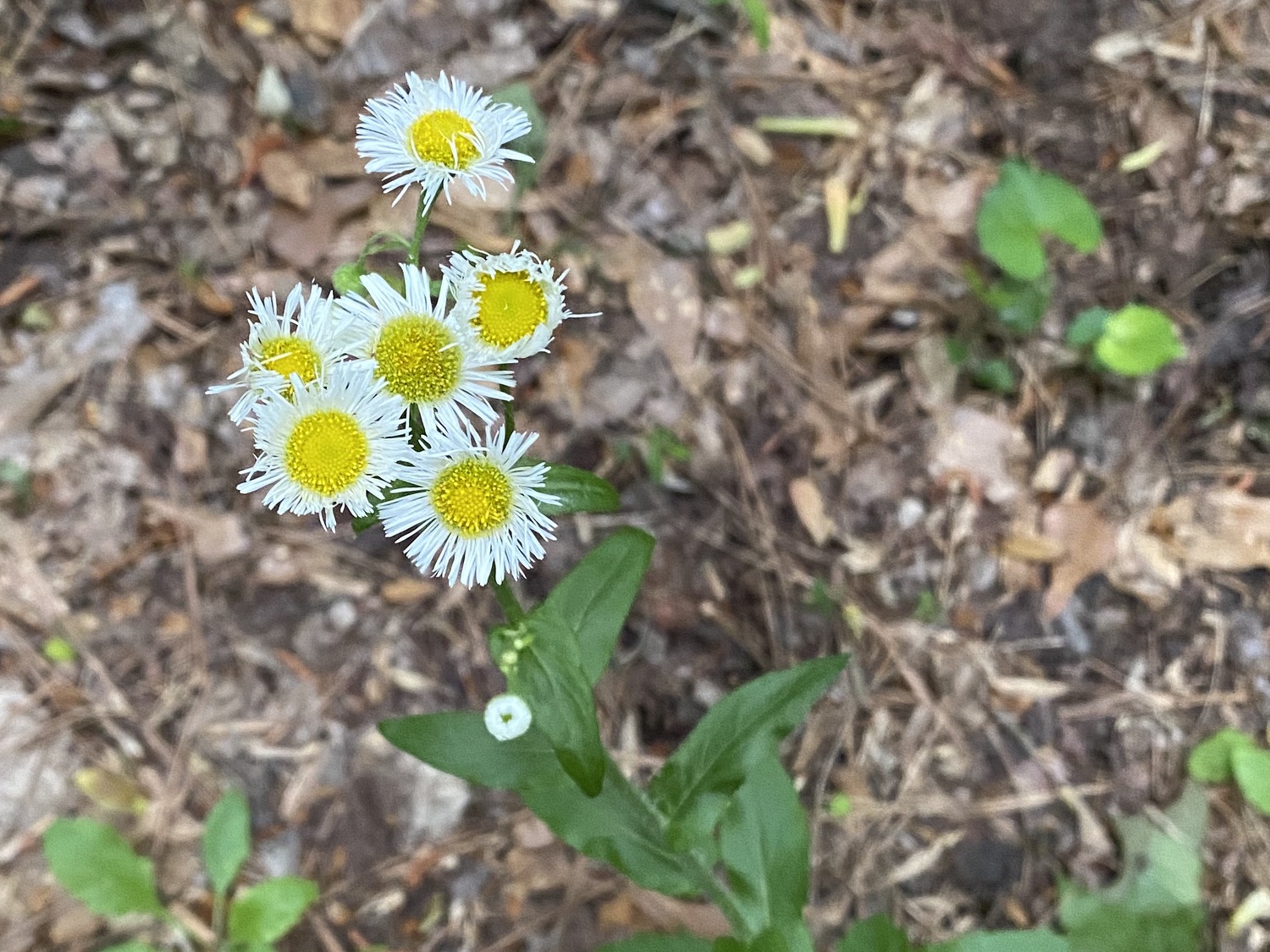
Small’s Ragwort (Packera anonyma, also called Southern Ragwort, Appalachian Ragwort). The flowers of these and the height of these plants make it look similar to Butterweed (Packera glabella), not surprising since they are in the same genus. The leaves of Southern Ragwort are far more toothed than the lobate leaves of Butterweed.
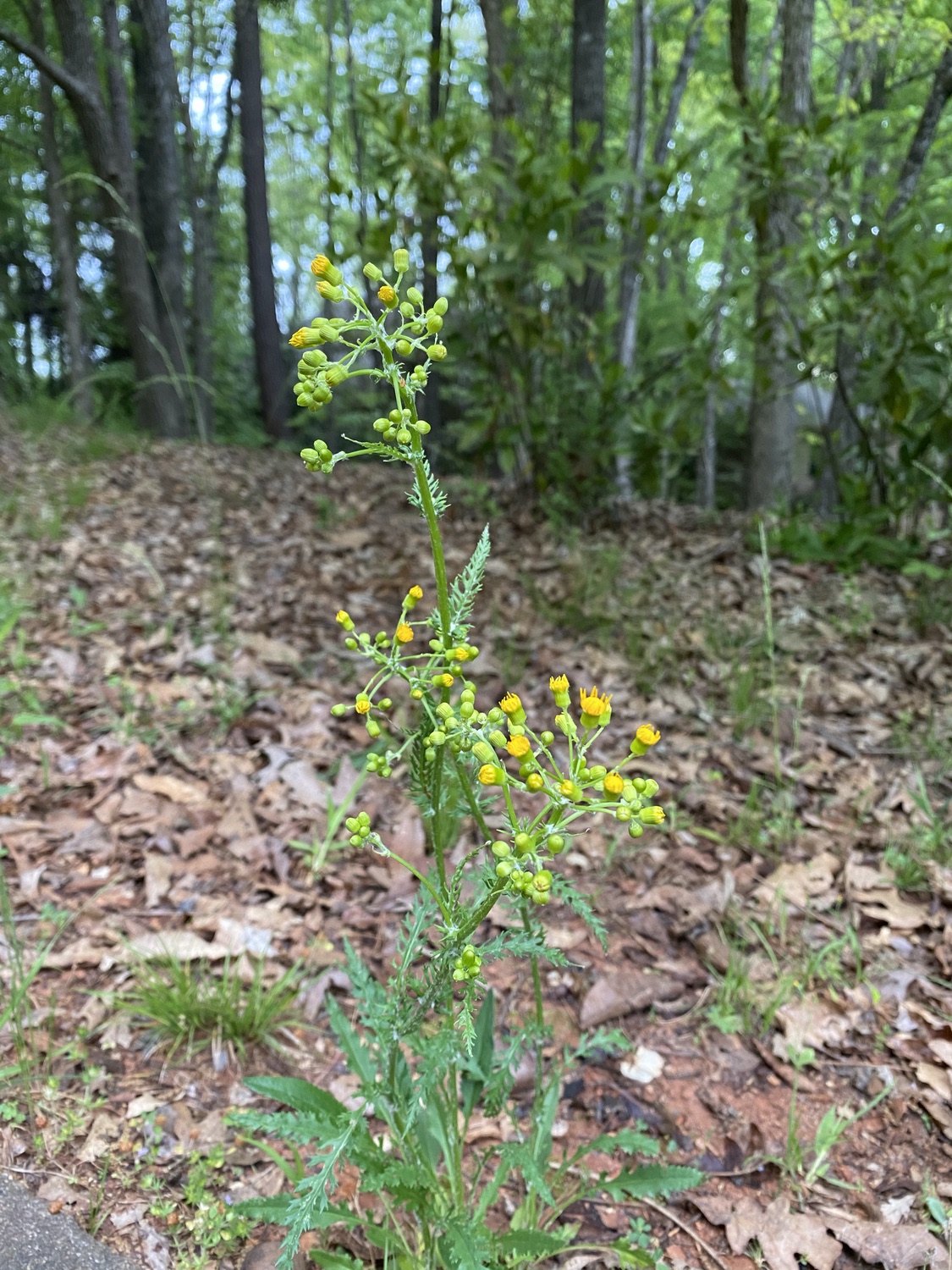
Butterweed (Packera glabella). Our neighbor has a field of this growing in her backyard.
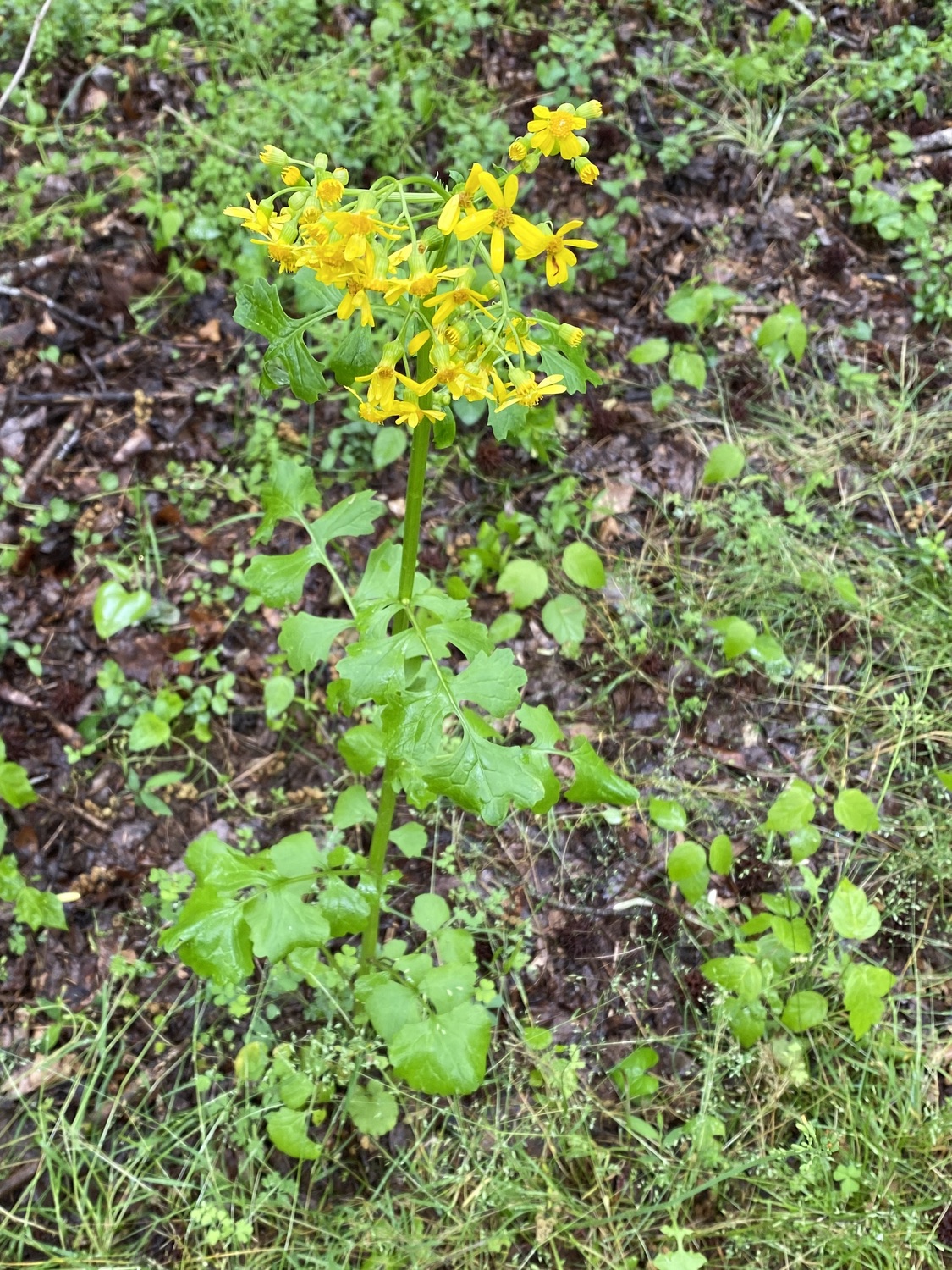
Ground Ivy (Glechoma hederacea; also called Gill-over-the-Ground and Creeping Charlie). This makes extensive mats up the street, with some vertical shoots loaded with flowers, most of which are gone by now. Note the rounded to kidney-shaped toothed leaves with prominent veins.
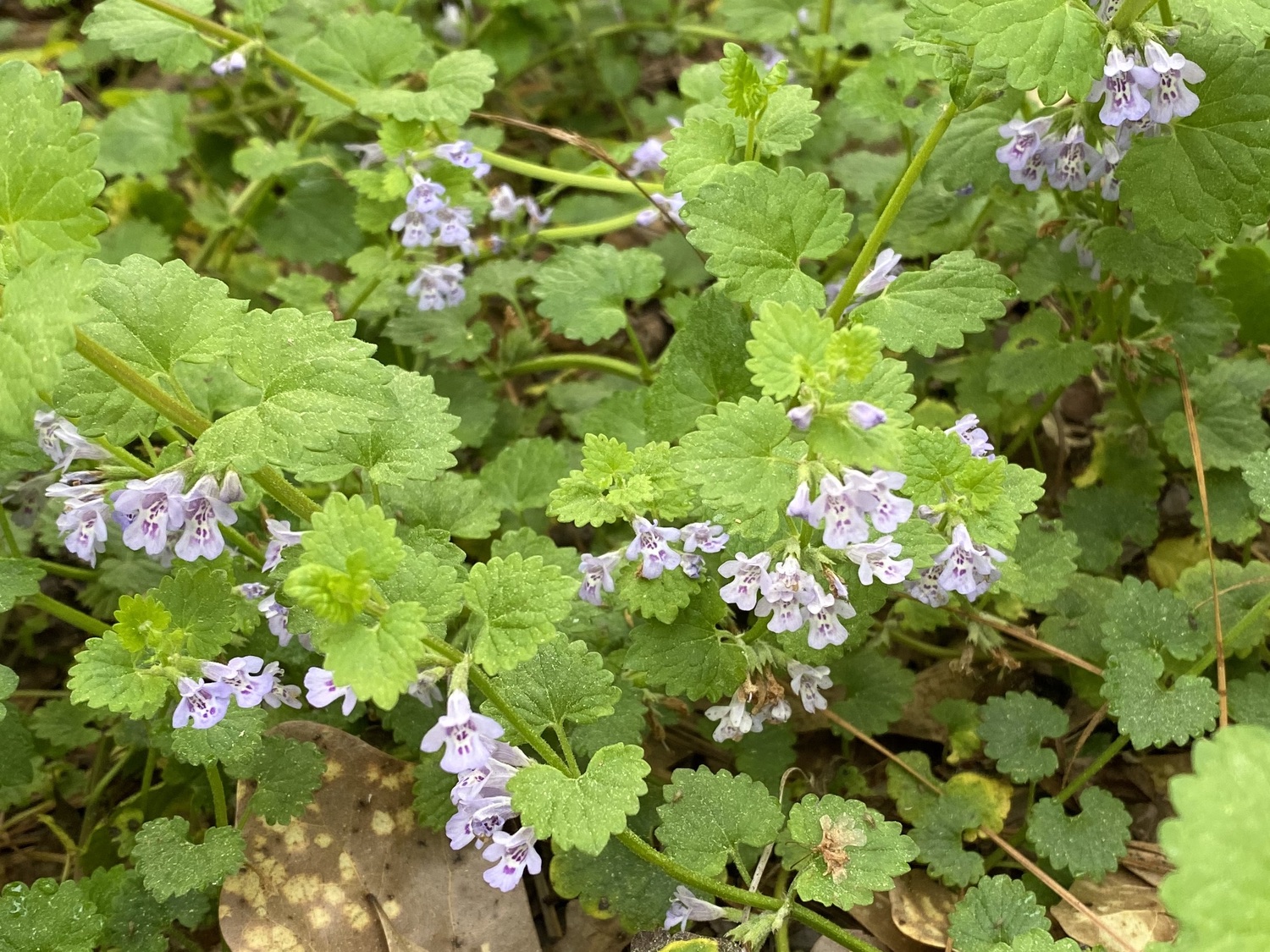
Lyre-leaved Sage (Salvia lyrata). Note the shape of the leaves, all of which are on the ground, and the long stem with some opened flowers, but many unopened ones.

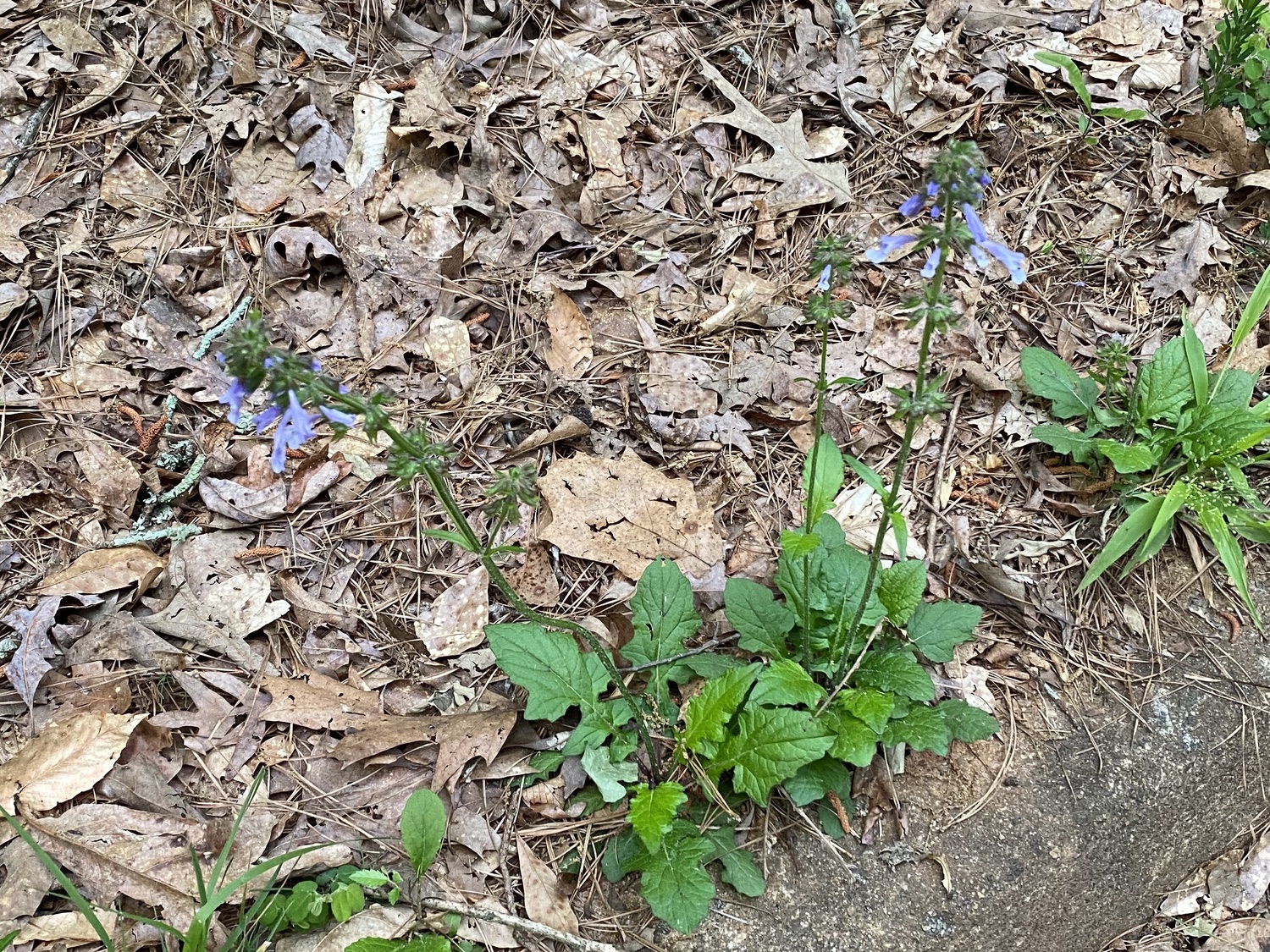
Common Bugle (Ajuga reptans, also called Bugleweed). I think this was originally planted in our gardens before we bought the house, and has since naturalized itself. It forms mats that choke out other plants. Some cultivars (White-flowered Bugle) have white flowers.
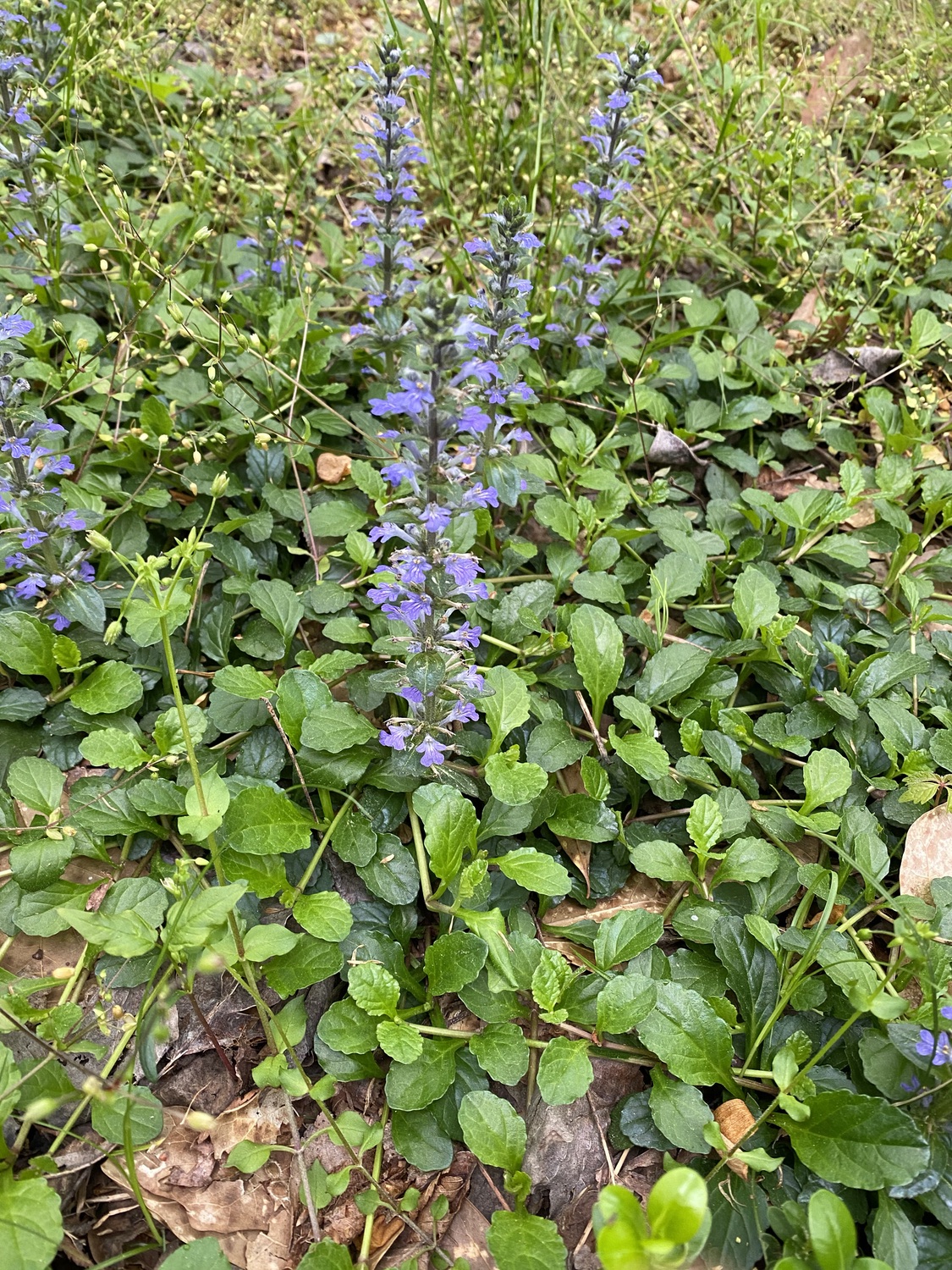
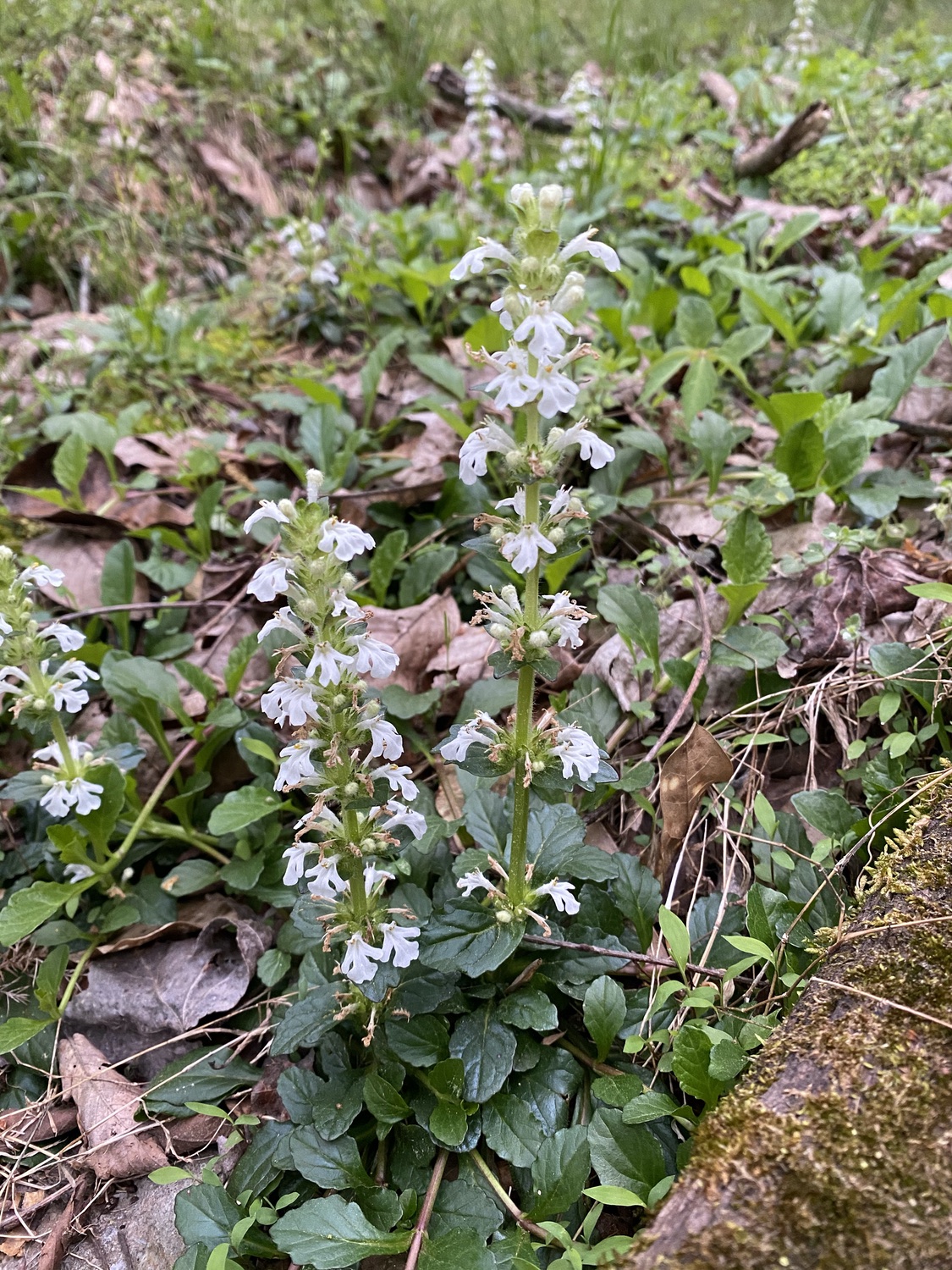
Common Chickweed (Stellaria media). This has finished blooming, but it is everywhere. I just removed three large wheelbarrows of it from the front garden yesterday!
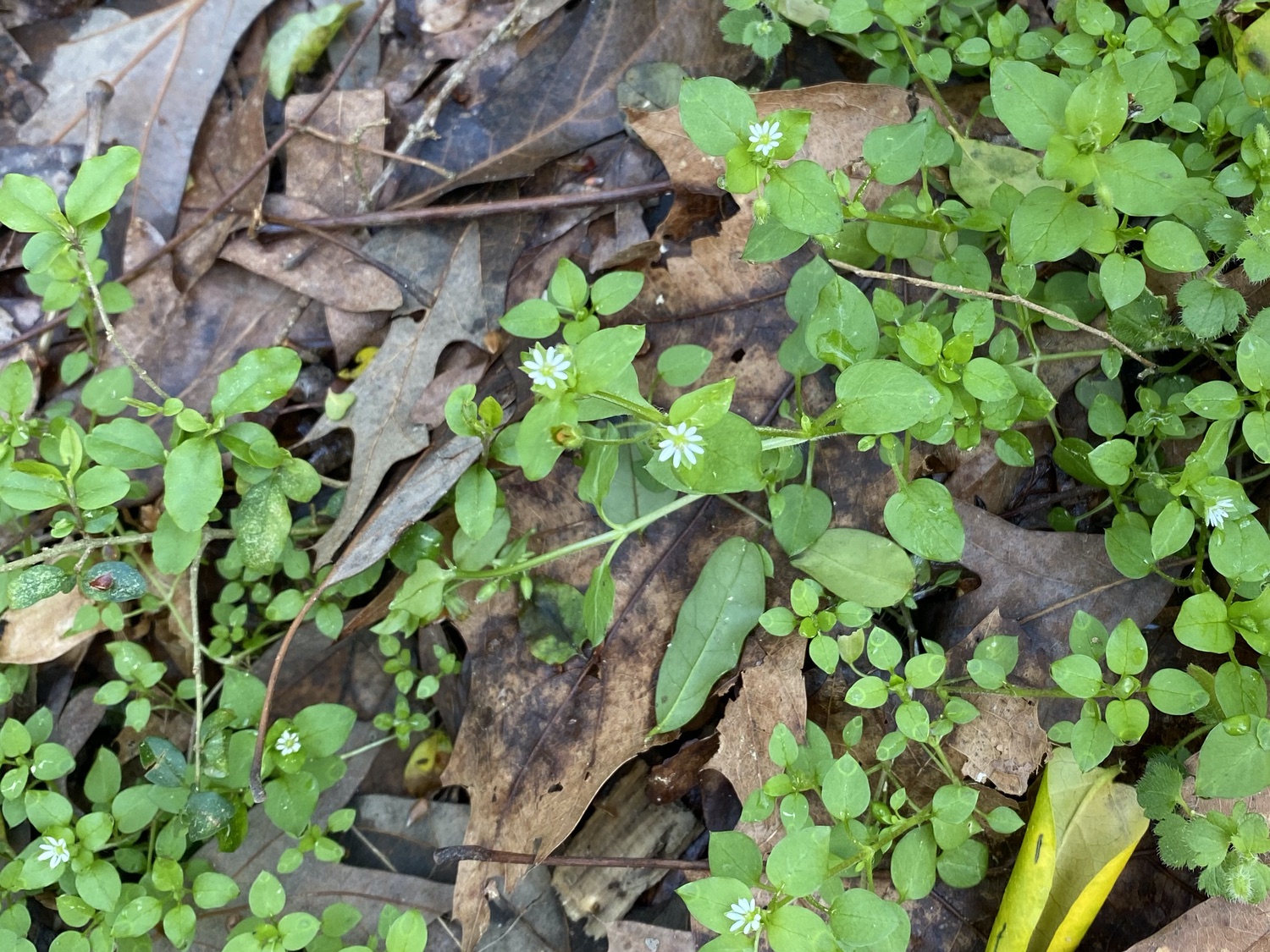
Little Hop Clover (Trifolium dubium). This small clover is everywhere in our yard. The flower is small, about ¼" across. There are three other similar plants, which I’m keeping my eye out for: Low Hop Clover (Trifolium campestre), Large Hop Clover / Large Trefoil / Golden Clover (Trifolium aureum), and Black Medick (Medicago lupulina).
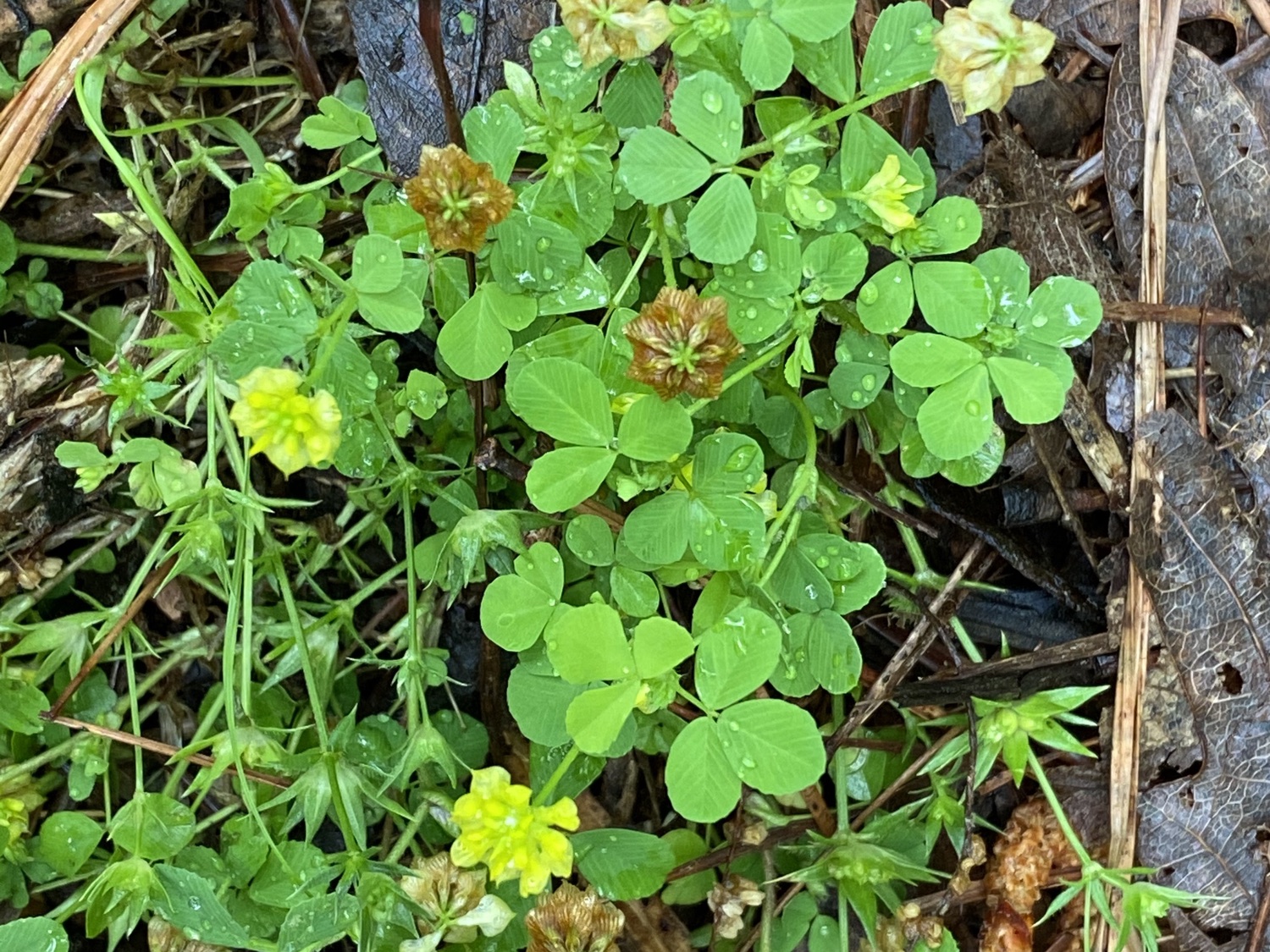

Cleavers (Galium aparine, also called Bedstraw). This weed spreads along the ground, and the hairy stems stick almost like velcro to cloth and other plants. The flowers are less than ⅛" across, with four pointed white petals. A web search for “sticky plant leaf whorls” immediately identified this!
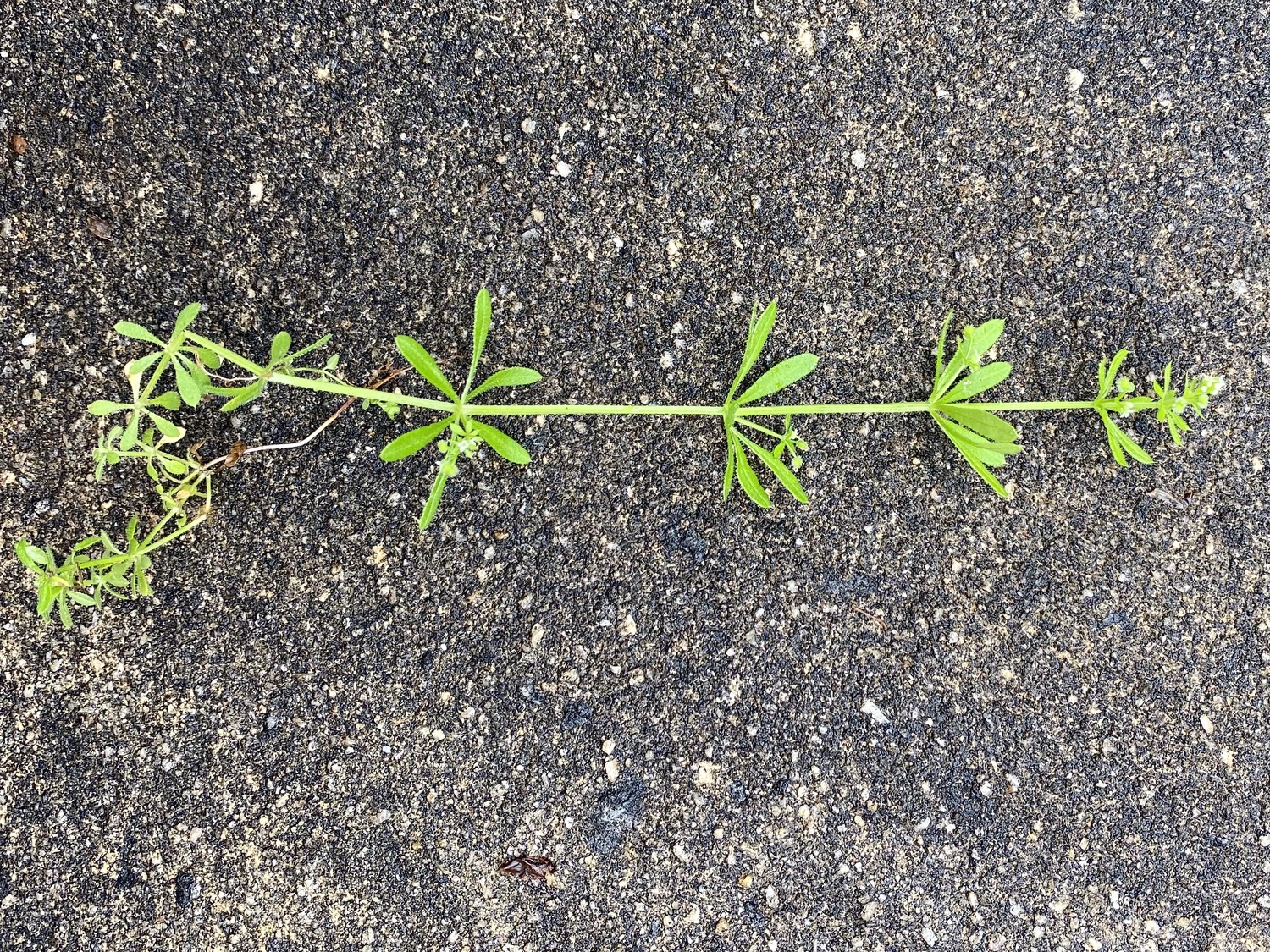
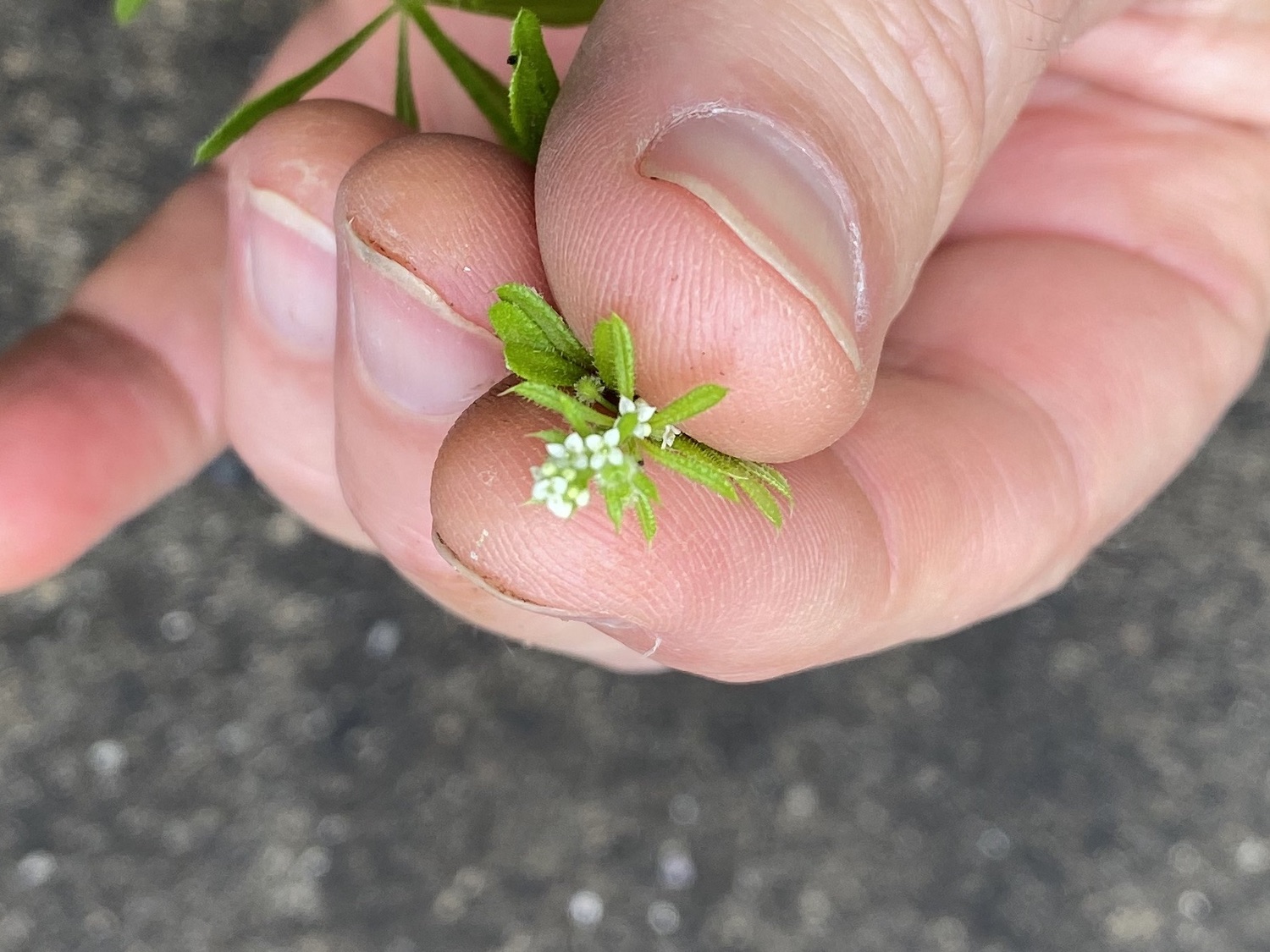
Not yet identified. The flowers are less than ⅛" across, with five rounded white petals.
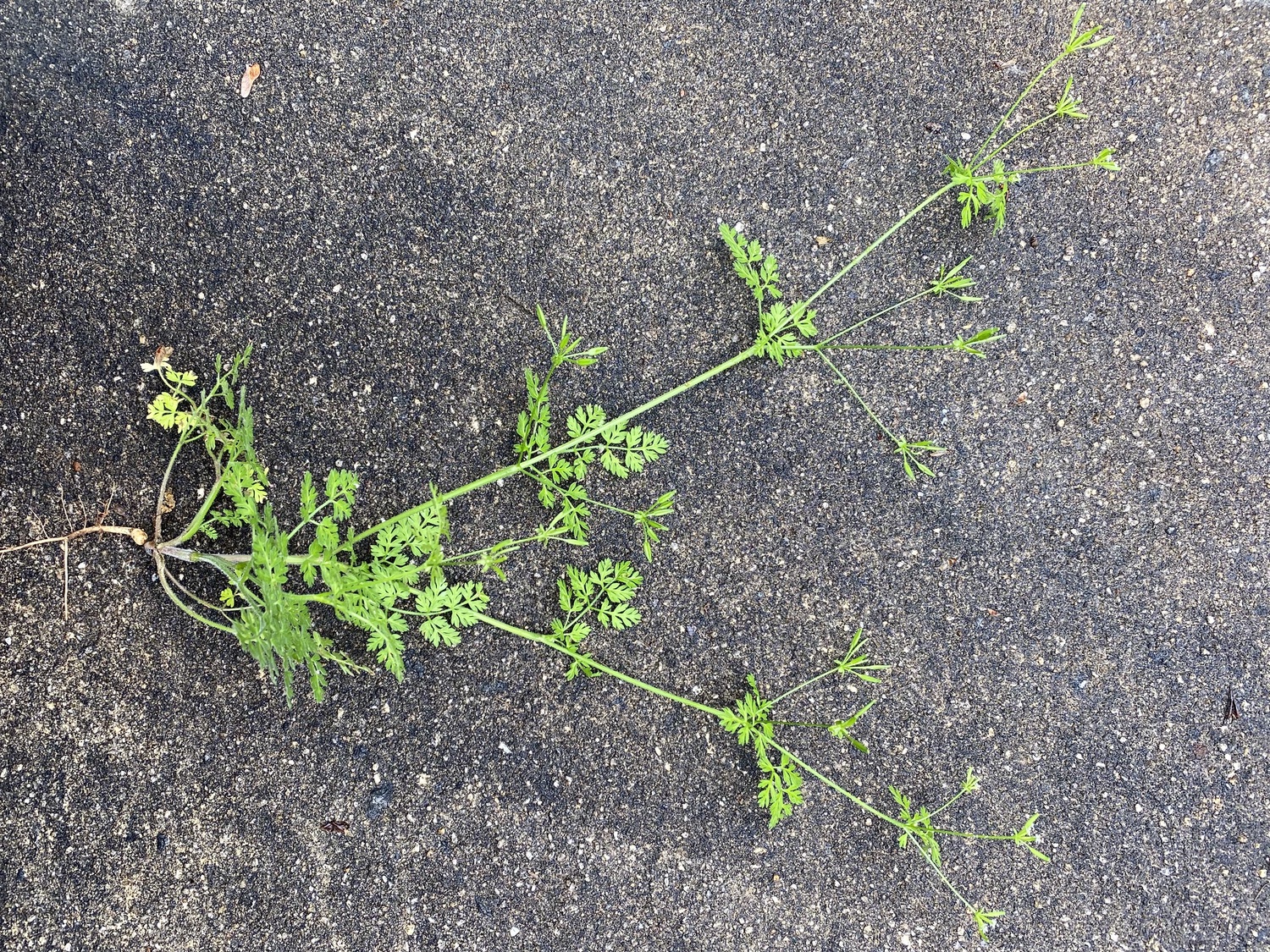
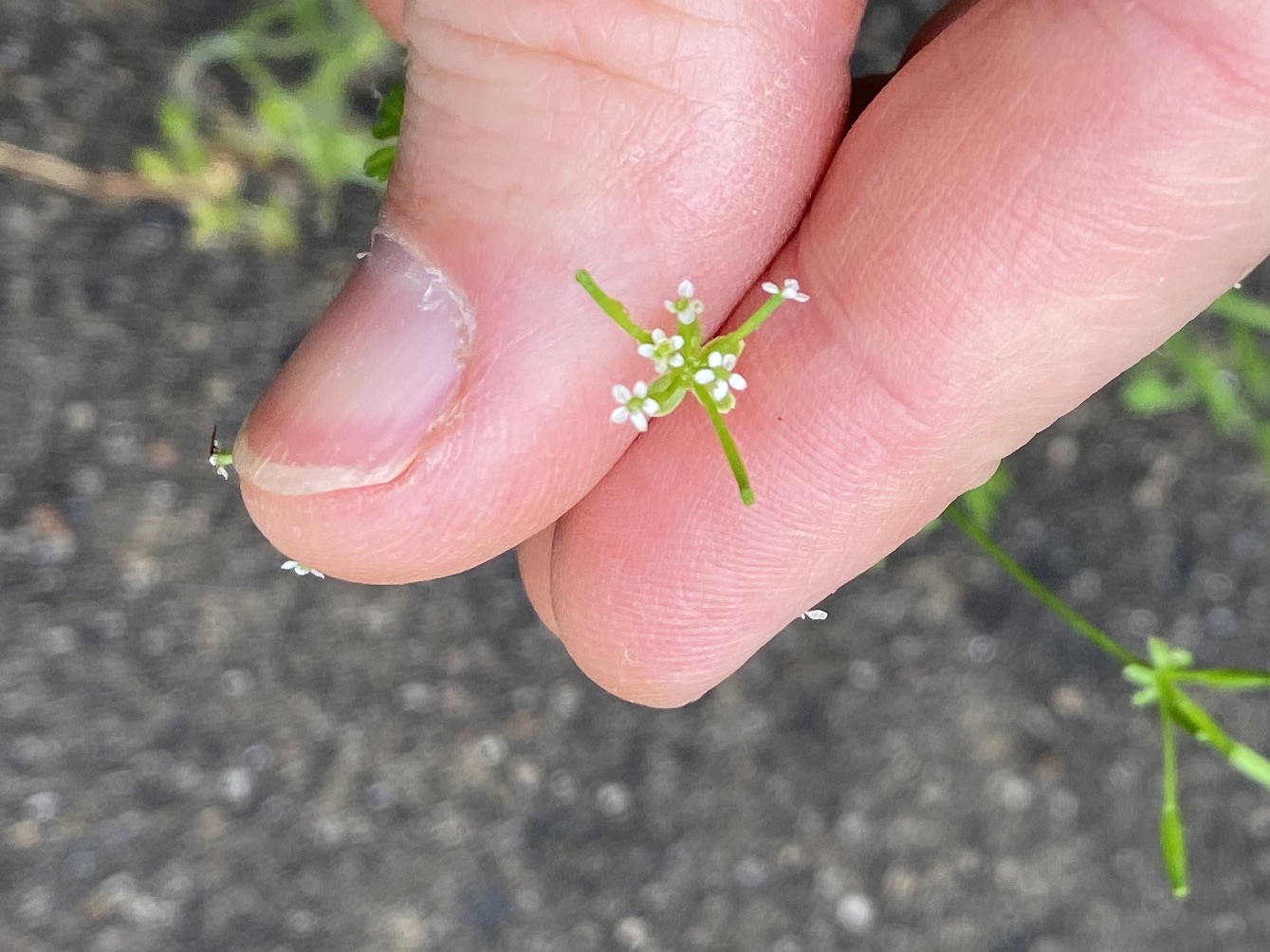
Crossvine (Bignonia capreolata) is also blooming along the street, with blossoms dropping from high up in the trees. It’s also blooming along the river in our backyard.
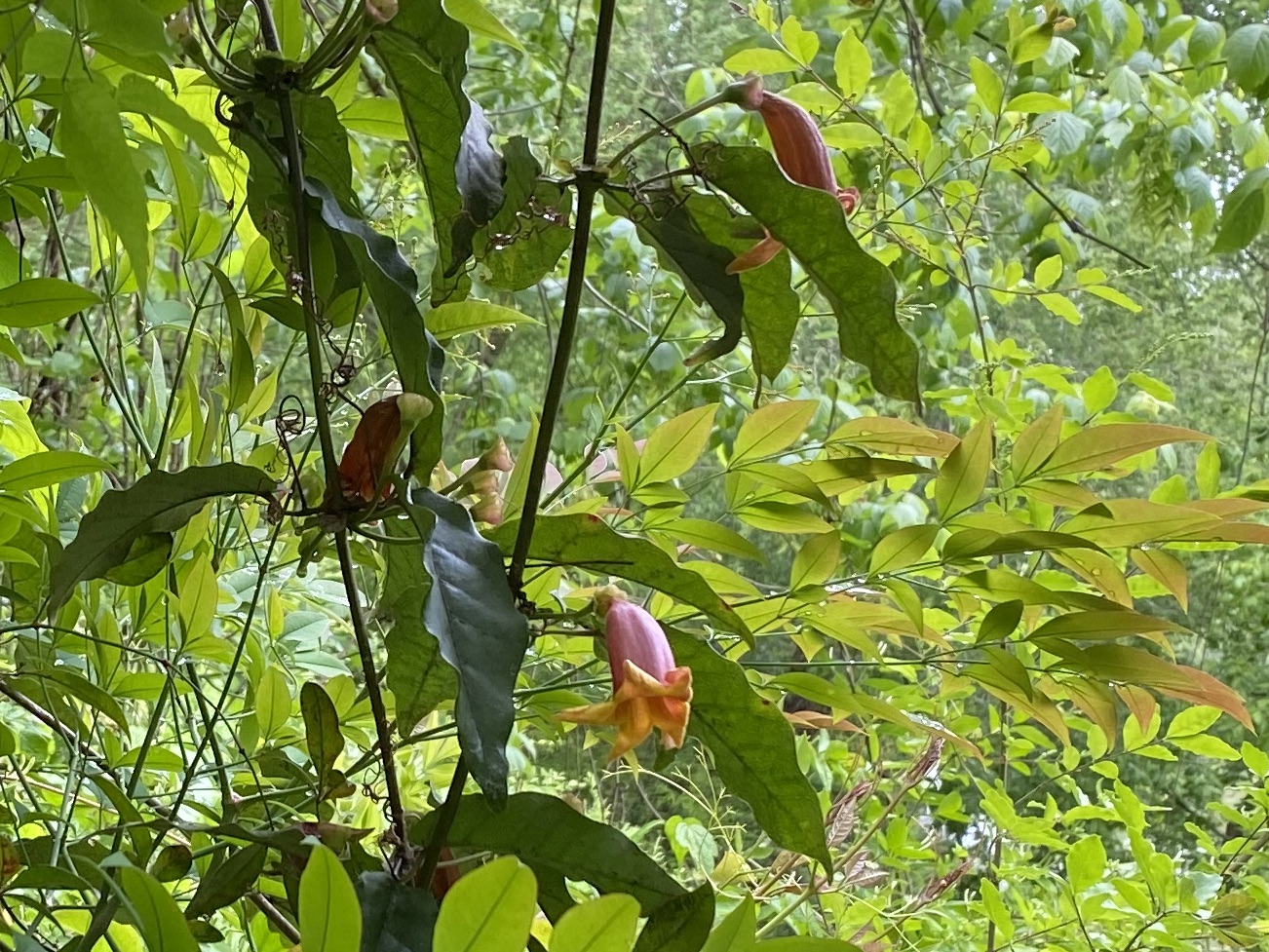
Mountain Laurel (Kalmia latifolia) is reportedly blooming along the river.
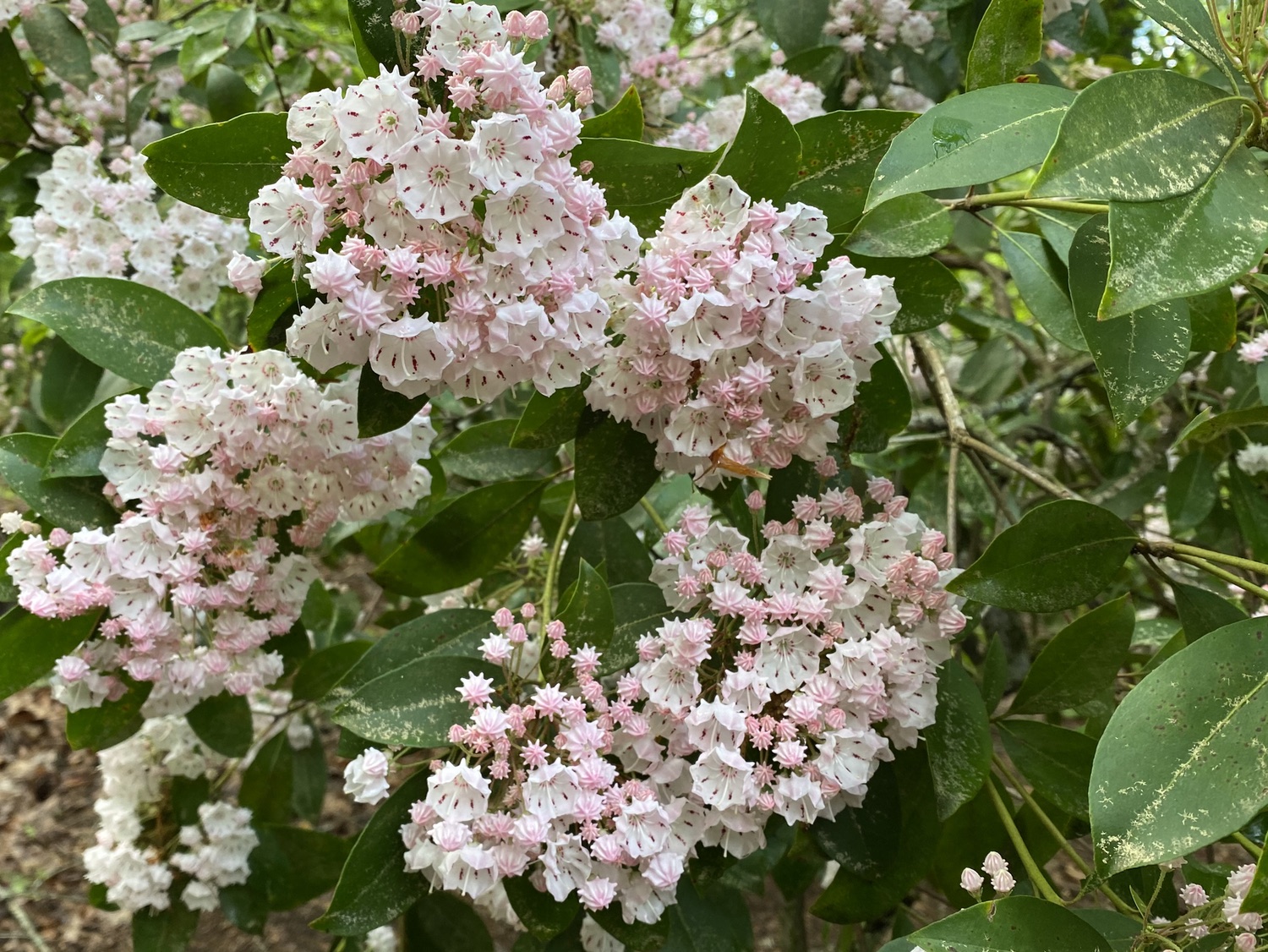
References
Chafin, L.G. 2016. Field Guide to the Wildflowers of Georgia and Surrounding States. The University of Georgia Press, Athens, Georgia.
Duncan, W.H., and M.B. Duncan. 1999. Wildflowers of the Eastern United States. The University of Georgia Press, Athens, Georgia.